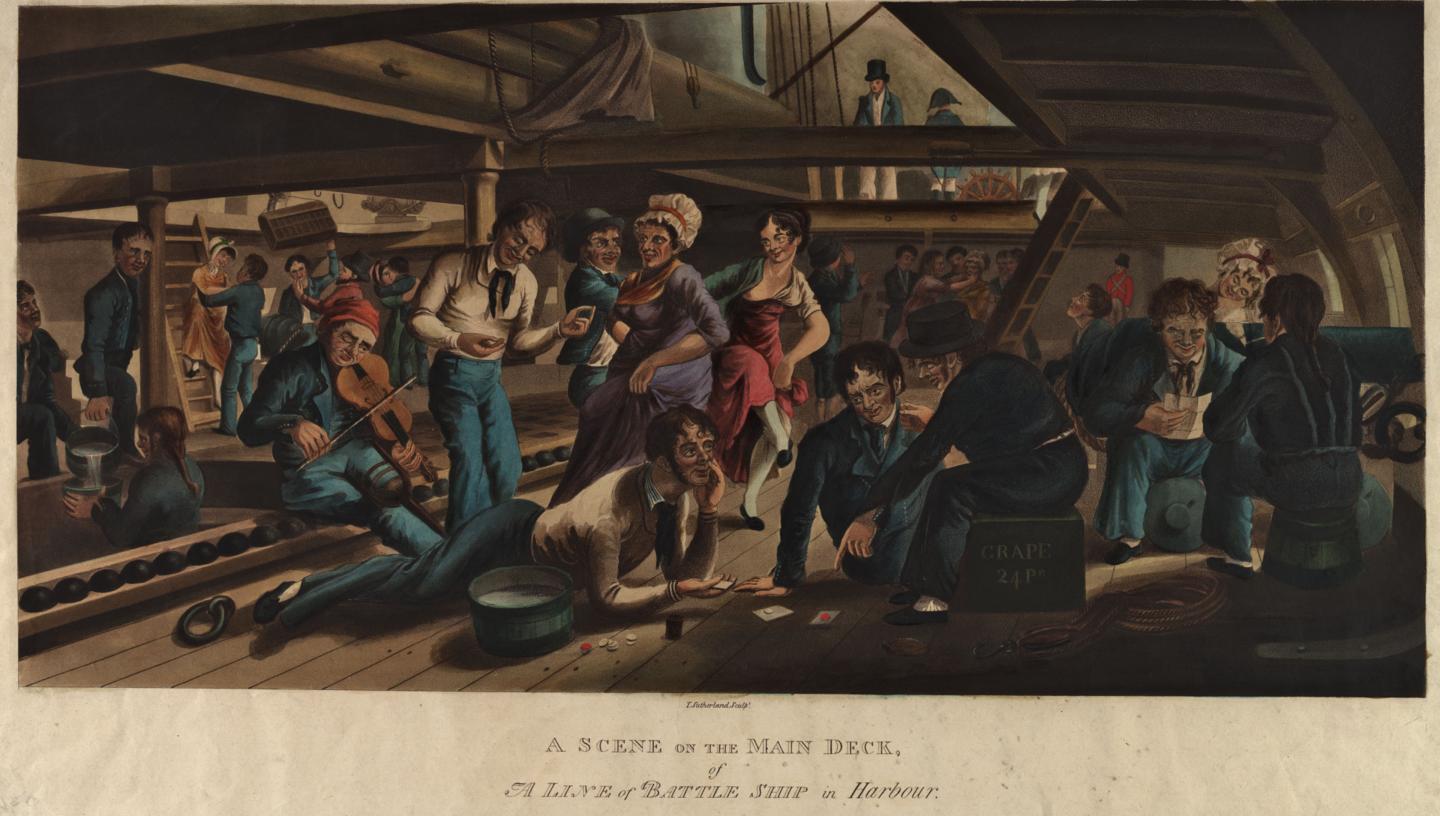

Life at sea in the age of sail
What did it mean to be 'tarred and feathered'?
Life at sea during the age of sail was filled with hardship. Sailors had to accept cramped conditions, disease, poor food and pay, and bad weather.
Over a period of hundreds of years, seafarers from the age of the early explorers to the time of the Battle of Trafalgar in 1805, shared many common experiences. Men working at sea had much to endure; cut off from normal life on shore for months, even years, they had to accept cramped conditions, disease, poor food and pay. Above all, they faced the daily dangers of sea and weather.
What was scurvy?
Why were punishments so harsh at sea.
A seaman's life was hard, and he had to be tough to survive, so ship's officers kept strict discipline on board. In this way they hoped to keep morale high and prevent mutiny.
Seamen could be ‘tarred and feathered’, tied to a rope, swung overboard and ducked or ‘keel-hauled’, dragged round the underneath of the ship. Flogging was the most common, with the whole crew often made to watch. A rope's end was used, or the infamous ‘cat o’ nine tails’. A seaman found guilty of mutiny or murder would be hanged from the yard arm.
What food was there on board a ship?
The main rations were salt beef or pork, cheese, fish, ale and some form of ship's biscuit. The quality of food deteriorated because of storage problems, lack of ventilation, and poor drainage. It was also affected by the presence of rats and other vermin on board.
What jobs were there on board?
Typical jobs on board included cook, parson, surgeon, master gunner, boatswain (in charge of the sails), carpenter and quartermaster. Other members of the crew would, of course, carry out all the duties, including keeping watch, handling sails, and cleaning decks.
It is interesting to note that the names for jobs of men responsible for working a ship (boatswain, coxswain, seamen) are of Anglo-Saxon origin, while those of officers (Captain, Lieutenant, Admiral) are of Norman-French origin. This is an indication of a class distinction between roles on board.
What were press gangs?
It was not always possible to fill ships’ crews with volunteers, especially in wartime, so the law allowed gangs to seize men and force them to join a ship. Pressing peaked in the 18th century but it was still going on as late as 1850.
What happened to sick seamen?
There was a great deal of sickness at sea. Seamen were often cold and wet, rats carried disease, and a poor diet not only caused malnutrition, but specific illnesses such as scurvy – caused by a lack of vitamin C in the diet.
As well as injury from shipboard accidents, there was risk of death or maiming in times of battle. Ships' surgeons worked in cramped and filthy conditions with no anaesthetic, so infection and gangrene was commonplace.
What sort of pay did seamen get?
By the end of the 1700s, pay on a naval ship was less than that on a merchant ship. However, as well as basic wages, sailors would expect to have a share of prize money or booty from captured enemy vessels.
What did seamen do off duty?
Traditionally hard-drinking and tough, seamen made the best of their cramped living quarters, enjoying games of dice and cards, telling tales, playing musical instruments, carving, drawing, practising knots or model making. They also sang ‘sea shanties’ – rhythmic work songs to help repetitive tasks such as hauling on ropes.

Gifts inspired by life on board ship
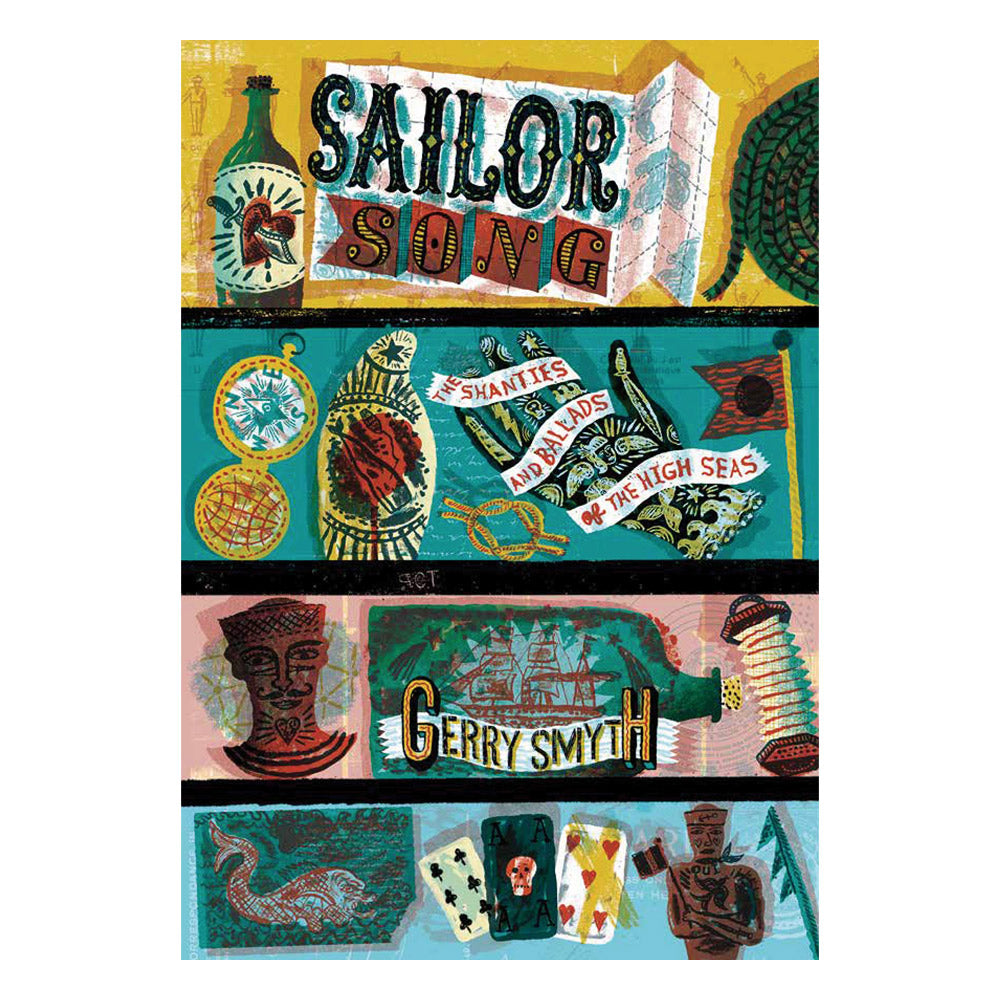

Access and Info for Institutional Subscribers
The age of sail.
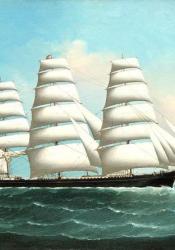
From the mid 16 th century to the mid 19 th century, sailing was at its all-time peak. Its height began at the Battle of Lepanto in 1571 and ended during the Battle of Hampton Roads in 1862 (“Age of Sail”). In this last battle, the use of the steamship the CSS Virginia in the battle destroyed the still sailing ships and proved the power and feasibility of steam-powered sea travel (“Age of Sail”). Before the decline of sailing, there were many different types of sailing ships for the many different facets of water travel and exploration. At the beginning of this “Age of Sail”, the most commonly used ship was called a carrack (“Sailing ship”). These ships were popular because they had large cargo hold capabilities and were easiest for exploration (“Sailing ship”). In the 1700s, the ships that are popularized in history books are those used in war. Sailing warships are built to be able to carry a large load of war materials, including, cannons and cannonballs (“Sailing ship”). The most popular warship in this time period is called the man-of-war. In the early 1800s, Baltimore clippers became a highly popularized type of ship to use (“Sailing ship”). They were used to transport valuable, perishable cargo because of their high speeds (“Baltimore clipper”). They were also used to transport slaves (“Baltimore clipper”). Lastly, the last ship to experience a great amount of popularity during the “Age of Sail” was the iron-hulled sailing ship (“Sailing ship”). These ships also moved great loads of cargo like many before them (“Sailing ship”). After this, the age of sail had ended and steam-powered boats became a primary means of water travel, especially since it was more feasible at this time for steamships to travel on the Suez Canal (“Age of Sail”).
Oh, Lucy, I cannot imagine the despair that overtakes you, but I understand it all the same. You expect your sweet love to arrive home, safe from the outside world to hold in your arms but are met with nothingness. All you have left is the memories and moments you both once shared. My former husband left me a widower just ten fleeting years ago. I still think of him fondly. He set out to sail with his closest companions, leaving me with his children, the eldest bearing his name, Charles. My love told me he’d come back with the greatest of riches, but now, the greatest riches would be to just see his tender face one last time. I was given word that his boat sank, very similar to your own. They found the sails and flags on the shore, but not my Charles. If anything at all, we can say we loved and lost, but we will meet them again. It may be hard to bear the pain knowing your dear friends, Dr. John and Paulina, and Ginevra and Count De Hamal, are given the gift of seeing each other’s faces each day, but, we have the gift of a great guardian. While you both practiced separately, you may sleep soundly knowing that M. Paul is smiling upon you each and every night.
Brontë Charlotte. Villette . 1853, The COVE. https://studio.covecollective.org/documents/villette-2 . Accessed 23 Sept 2020.
"File:Portrait of an American Clipper Ship.jpeg." Wikimedia Commons, the free media repository . 13 Oct 2019, 10:32 UTC. 23 Sep 2020, 18:52 < https://commons.wikimedia.org/w/index.php?title=File:Portrait_of_an_American_Clipper_Ship.jpeg&oldid=370381371 >.
Wikipedia contributors. "Age of Sail." Wikipedia, The Free Encyclopedia . Wikipedia, The Free Encyclopedia, 30 Aug. 2020. Web. 23 Sep. 2020.
Wikipedia contributors. "Baltimore Clipper." Wikipedia, The Free Encyclopedia . Wikipedia, The Free Encyclopedia, 17 Sep. 2020. Web. 23 Sep. 2020.
Wikipedia contributors. "Sailing ship." Wikipedia, The Free Encyclopedia . Wikipedia, The Free Encyclopedia, 22 Sep. 2020. Web. 23 Sep. 2020.
Associated Place(s)
Event date:, parent chronology: .

NATIONAL MARITIME HISTORICAL SOCIETY
- National History Day
- Find a Museum
- Sea History Magazine

DISCOVER MORE
Feeding the ship’s crew: provisioning for an ocean voyage.
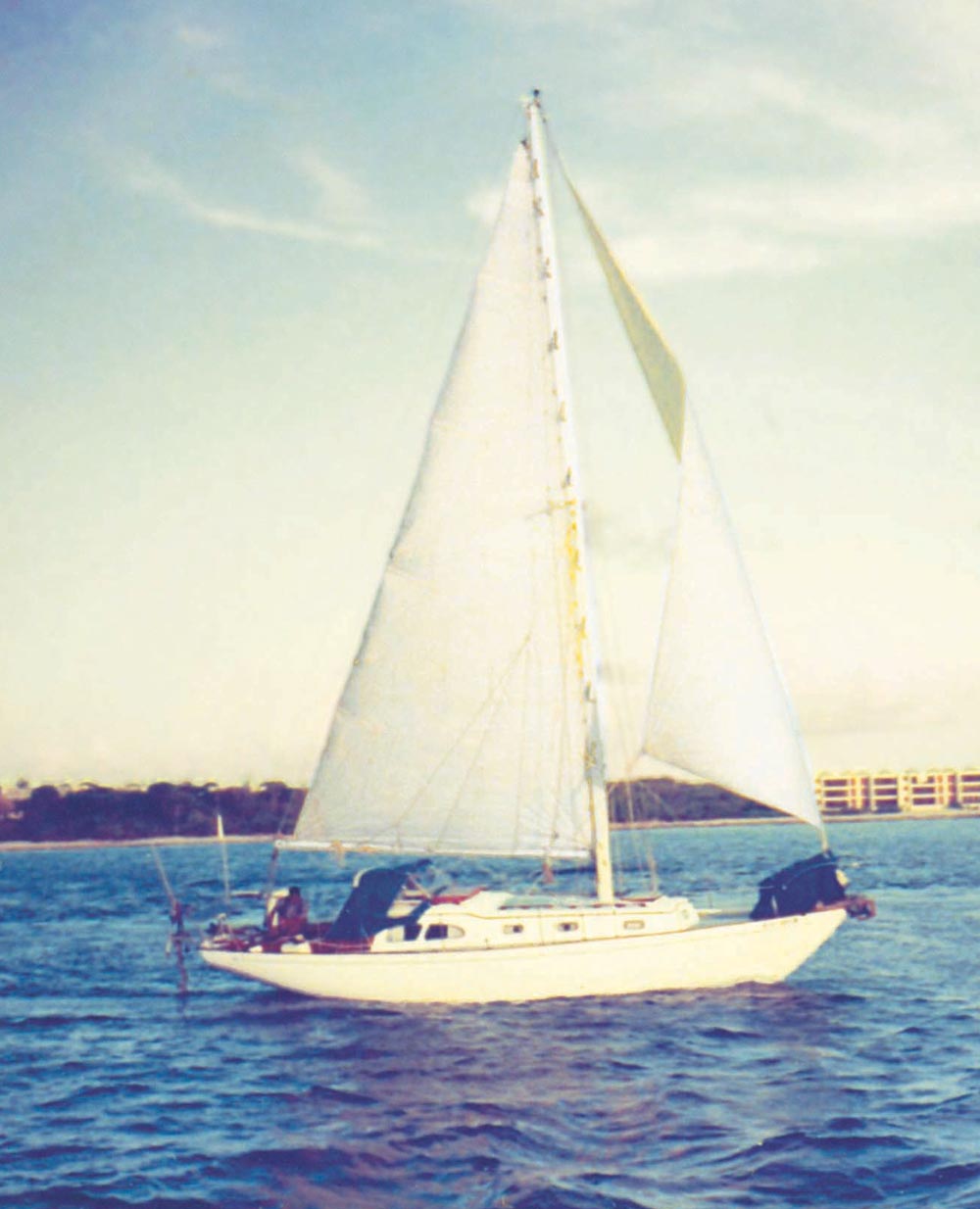
Teddy Seymour aboard his boat Love Song off St. Croix; the self-steering gear, safe and sound, can be seen suspended off the stern. Photo courtesy of Univ. of Florida, Special Collections .
When Teddy Seymour was preparing for his sailing voyage around the world , he had to strategize to bring enough food for the long stretches across the world’s oceans. His 35-foot sailboat did have a 12-volt refrigerator, which he filled with fresh meat and vegetables, but they wouldn’t last long. He planned his meals around non-perishable foods that could last a long time without refrigeration, just as sailors have done for centuries.
When he set off on the first leg of his voyage around the world, he left with food lockers filled with peanut butter, potatoes, rice, beans, oatmeal, onions, flour and lentils. Along the way he would fish; he caught about one fish per week underway.
Teddy Seymour’s boat was pretty small to fit all the supplies he would need, but he was the only person on board, so it was manageable. Sailing ships before the 20th century had no refrigeration at all—even canned food wasn’t invented until 1810. Those in charge of provisioning ships selected food that could last a long time: flour, salted meats, raisins, dried beans, rice, hard cheeses, and molasses, for example. To be able to serve fresh meat out at sea, oceangoing ships often brought livestock— pigs, chickens, goats, cows, and sheep—that they could butcher along the way. This dependence on non-perishable foods frequently caused more just than mealtime boredom.
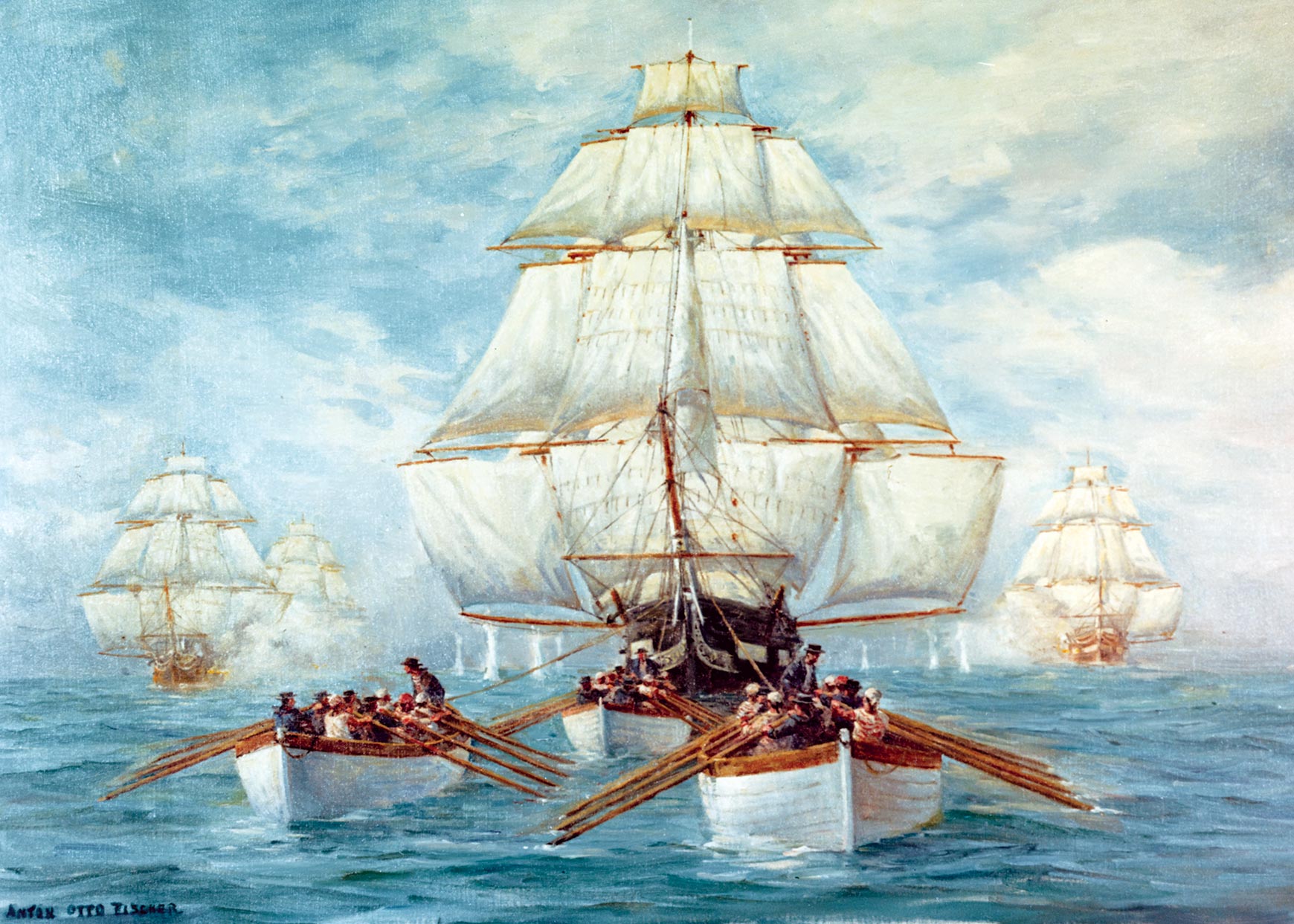
USS Constitution’s crew of 450–500 men looked forward to a hearty meal when they got off watch. Courtesy of US Navy Art Collection.
During the Age of Sail, it is estimated that more mariners died from scurvy, a disease caused by a diet lacking in Vitamin C, than from storms, shipwrecks, battles, and all other diseases combined.
The logistics of feeding the hundreds of sailors and officers who made up the crew of large navy ships in the Age of Sail was challenging to say the least. Records from USS Constitution from the War of 1812 reveal just how much food was required to feed her large crew. The frigate left port on 30 December 1813 with 485 men onboard for a cruise expected to last six months. With them, they brought:

Today, commercial and navy ships have plenty of refrigeration and can make all the fresh water they need by using reverse osmosis desalination systems. Still, for ships carrying thousands of people, the shopping list for even just a short time at sea is daunting. For a one-week trip aboard the Royal Caribbean cruise ship Symphony of the Seas , for example, the food inventory manager orders more than 600,000 pounds of food and beverages to feed the nearly 9,000 passengers and crew.
Here’s just a partial list of the food onboard for the week:

Next time you have to pack food for a day trip and have trouble fitting everything in your cooler, consider the task of provisioning for ocean voyages both in the Age of Sail and today.
Did You Know?
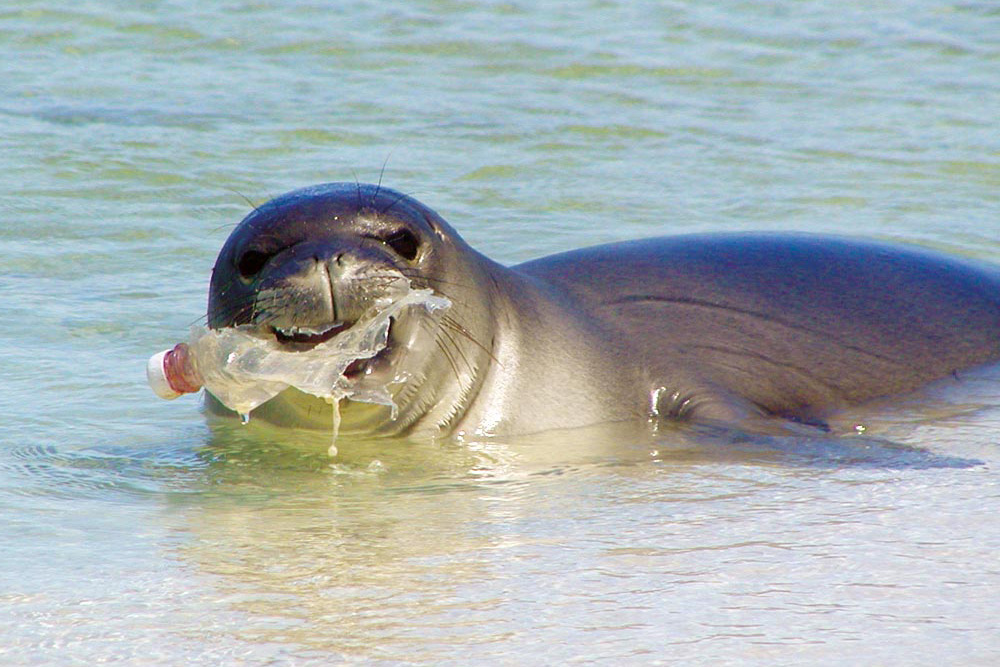
Marine animals consume plastic when they confuse it for food.
Small plastics and floating objects often look like food to aquatic animals and sea birds. When they eat plastic, it often gets stuck in their digestive system, making them feel full and unable to eat proper food.
What can YOU do? Learn more at Getting Rid of Marine Debris
AdBlocker Detected
We have detected that you are using extensions to block ads. Please support us by disabling these ads blocker. Ads keep us going and we ask for nothing else in return... Thank you for your cooperation. You can sign-up to the Membership any time to remove the adds and enjoy the content with no interruptions…

Transcending Boundaries: Exploration and Discovery in the Age of Sail
Share share tweetoverview introduction to the age of sail the age of sail was a period of maritime exploration and discovery that spanned from the 15th to the 19th century. it was a time when sailors and explorers ventured into uncharted waters, braving treacherous seas and unknown dangers in search of new lands, resources, and […].
by Andrei Tapalaga | Oct 19, 2023 | Culture
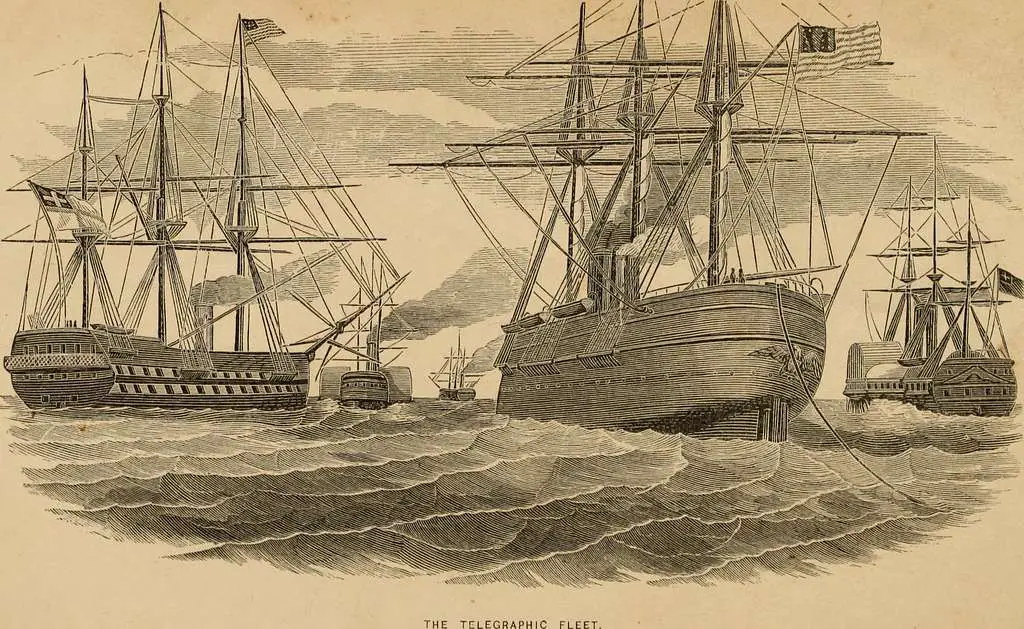
Introduction to the Age of Sail
The Age of Sail was a period of maritime exploration and discovery that spanned from the 15th to the 19th century. It was a time when sailors and explorers ventured into uncharted waters, braving treacherous seas and unknown dangers in search of new lands, resources, and trade routes. This era saw the rise of powerful naval empires, such as the British, Spanish, and Portuguese, who competed for dominance on the high seas. The Age of Sail brought about significant advancements in shipbuilding, navigation, and cartography, enabling sailors to undertake long and perilous voyages. Explorers like Christopher Columbus, Vasco da Gama, and Ferdinand Magellan became household names as they embarked on epic journeys that reshaped our understanding of the world. These expeditions were often funded by wealthy monarchs and merchant companies, who sought to expand their influence and wealth through colonization and trade. The Age of Sail also witnessed the publication of top news articles that captivated the public’s imagination and fueled their desire for adventure and discovery. These articles reported on the latest expeditions, discoveries, and encounters with indigenous peoples, sparking widespread interest and curiosity. The legacy of the Age of Sail continues to inspire and fascinate us today, reminding us of the human spirit’s relentless pursuit of knowledge and exploration.
Technological Advancements in Navigation
The Age of Sail witnessed remarkable technological advancements in navigation, which revolutionized exploration and discovery. Scientists and inventors developed innovative instruments and techniques that allowed sailors to navigate more accurately and confidently across vast oceans. One such invention was the astrolabe, a device used to measure the altitude of celestial bodies. This enabled sailors to determine their latitude and calculate their position at sea. Another significant advancement was the development of the magnetic compass, which provided a reliable method for determining direction. Additionally, the invention of the quadrant and the cross-staff allowed sailors to measure the angle between the horizon and a celestial body, aiding in determining latitude. These advancements in navigation not only expanded the horizons of exploration but also paved the way for future scientific discoveries and maritime trade.
Impact of Exploration on Trade and Commerce
Exploration during the Age of Sail had a profound impact on trade and commerce. As European sailors ventured into uncharted waters, they discovered new trade routes and valuable resources from distant lands. The establishment of colonies and trading posts allowed for the exchange of goods and ideas between different regions . This led to the growth of international trade networks and the emergence of powerful trading companies, such as the Dutch East India Company and the British East India Company. These companies played a crucial role in facilitating global trade and shaping the modern world economy. The exploration and discovery of new territories also sparked competition among European powers, leading to conflicts and wars over control of lucrative trade routes and territories. The impact of exploration on trade and commerce cannot be overstated, as it laid the foundation for the interconnected global economy we see today.
Explorers and Expeditions

Famous Explorers of the Age of Sail
The Age of Sail was a period of great exploration and discovery, with numerous famous explorers venturing into the unknown. These intrepid sailors braved treacherous seas, unpredictable weather, and unknown territories in search of new lands, riches, and knowledge. One such explorer was Christopher Columbus, whose voyages across the Atlantic Ocean opened up a new world and paved the way for future expeditions. Another notable explorer was Ferdinand Magellan, who led the first circumnavigation of the globe, proving that it was possible to sail around the world. These explorers were driven by a thirst for adventure, a desire to expand their horizons, and a curiosity about the world beyond their own. They relied on their navigational skills, the advancements in shipbuilding, and their determination to push the boundaries of what was known. Their discoveries not only expanded geographical knowledge but also sparked the imagination of future generations , inspiring them to explore and innovate using future technology.
Voyages of Discovery
In the Age of Sail, explorers embarked on bold voyages of discovery that transcended geographical boundaries and opened up new horizons. These intrepid sailors, driven by a thirst for knowledge and a spirit of adventure, braved the vast and treacherous oceans in search of lands yet unknown. Their journeys were not only physical but also intellectual, as they encountered new cultures, languages, and ideas along the way. The discoveries made during these expeditions reshaped the world as we know it, expanding our understanding of the globe and its inhabitants. One such notable explorer was Tarell McCraney Geffen Artistic Director , whose expeditions to distant lands brought back valuable artifacts and insights that enriched our collective knowledge of the world.
Challenges and Dangers at Sea
The Age of Sail was a time of great exploration and discovery, but it was not without its challenges and dangers. Navigating treacherous waters and unpredictable weather conditions were constant concerns for sailors. Limited provisions and the threat of scurvy made long voyages even more perilous. Pirates and privateers lurked in the shadows, ready to attack unsuspecting ships and plunder their valuable cargo. Shipwrecks were a constant threat, with countless vessels lost to the depths of the ocean. Despite these obstacles, brave sailors continued to set sail in search of new lands, driven by a thirst for knowledge and a desire to expand their horizons . The next summer promises even more exciting voyages and discoveries , as explorers prepare to set sail once again.
Cultural Exchange and Encounters

Interactions with Indigenous Peoples
During the Age of Sail, European explorers ventured into uncharted territories, encountering indigenous peoples and their unique cultures. These interactions were often marked by a complex interplay of curiosity, cooperation, and conflict. Explorers sought to understand the customs and traditions of the indigenous peoples they encountered, documenting their observations in journals and maps. They were fascinated by the rich diversity of languages, art, and spiritual beliefs. The spirit of Sondheim enchants the reader with tales of encounters with indigenous peoples , highlighting the profound impact these interactions had on both parties. However, it is important to acknowledge that these encounters were not always peaceful. Misunderstandings and clashes of interests sometimes led to violence and the imposition of European dominance. Nonetheless, the Age of Sail represented a period of exploration and discovery that transcended geographical boundaries and expanded humanity’s understanding of the world.
Exchange of Goods and Ideas
The Age of Sail was a time of unprecedented exchange of goods and ideas. As ships traversed the vast oceans, they carried with them a myriad of products, from spices and textiles to precious metals and exotic animals. These goods not only enriched the economies of the countries involved, but also sparked a cultural exchange that transcended borders. Alongside the trade of physical goods, ideas and knowledge were also shared. Scholars, explorers, and scientists embarked on voyages of discovery, documenting their findings and bringing back new information about the world. This exchange of goods and ideas laid the foundation for the development of new technologies, artistic movements, and scientific advancements. It fostered a spirit of curiosity and innovation that continues to shape our world today.
Cultural Impact of Exploration
Exploration during the Age of Sail had a profound cultural impact on societies around the world. The exchange of goods, ideas, and knowledge between different regions fostered the development of new cultural practices, artistic styles, and scientific advancements. This period of exploration also led to the establishment of trade routes that connected distant lands, facilitating the spread of goods and technologies. Additionally, the encounter with new peoples and civilizations challenged existing beliefs and expanded the horizons of human understanding. The exploration and discovery of new lands and peoples during the Age of Sail thus transcended geographical boundaries and sparked a wave of curiosity and innovation that continues to shape our world today.
Legacy and Lessons

Scientific Discoveries and Knowledge
The Age of Sail was a period of remarkable scientific discoveries and the accumulation of knowledge. Explorers and navigators ventured into uncharted territories, documenting their observations and findings. Naturalists studied the flora and fauna of newly discovered lands, expanding our understanding of the world’s biodiversity. Astronomers mapped the stars and developed new methods of celestial navigation, enabling safer and more accurate voyages. Cartographers meticulously charted coastlines, creating detailed maps that facilitated future explorations. Physicists and mathematicians developed theories and formulas to explain the physical forces at play in the natural world, laying the foundation for modern scientific understanding. The Age of Sail was a time of great intellectual curiosity and the pursuit of knowledge, pushing the boundaries of human understanding and paving the way for future scientific advancements.
Colonization and Imperialism
During the Age of Sail, colonization and imperialism played a crucial role in shaping the world as we know it today. European powers, driven by a desire for wealth and power, embarked on voyages of exploration and conquest. These expeditions led to the establishment of colonies in distant lands, bringing together people from different cultures and backgrounds. The encounters between the colonizers and the indigenous populations often resulted in conflicts and exploitation. The Bermuda Triangle became a mysterious and feared area for sailors, with numerous ships and planes disappearing under inexplicable circumstances. The arrival of newcomers in these lands brought about profound changes in the social, economic, and political fabric of the regions, leading to both progress and suffering.
Reflections on the Age of Sail
The Age of Sail was a remarkable period in human history, characterized by the exploration and discovery of new lands and cultures. It was a time when brave sailors embarked on perilous journeys across vast oceans, pushing the boundaries of what was known and venturing into the unknown. These intrepid explorers faced countless challenges, from treacherous storms to hostile encounters with indigenous peoples. Yet, they persevered, driven by a deep curiosity and a thirst for knowledge. Back then, navigation relied on ancient techniques such as celestial navigation, compasses, and maps. The sailors relied on the stars to guide their way and the winds to fill their sails. It was a time of great risk and great reward, where the promise of riches and glory lured many to set sail in search of new horizons. The Age of Sail was a testament to the indomitable human spirit and the desire to transcend boundaries.

Avid Writer with invaluable knowledge of Humanity!
Upcoming historian with over 30 million views online.
“You make your own life.”
You May also Like


How Long Did It Take To Sail Across The Atlantic In 1600?
In the age of exploration during the 16th and 17th centuries, daring voyages were made across treacherous oceans in search of new lands, resources, and trade routes. For those wondering, if you were an explorer setting sail in 1600, how long would it take you to cross the Atlantic?
If you’re short on time, here’s a quick answer: In 1600, a typical sailing ship would take 4-8 weeks to cross the Atlantic from Europe to the Americas, depending on weather and currents . Read on below for more details.
In this comprehensive guide, we’ll cover the typical sailing speeds, popular routes, weather factors, current knowledge and navigation abilities in 1600 that impacted Atlantic crossing times from west to east and vice versa.
We’ll also highlight some key historical crossings and estimates from maritime historians.
Sailing Speeds and Ship Types in the 1600s
Square rigged carracks and galleons.
In the 1600s, sailors crossed the Atlantic Ocean using square rigged carracks and galleons. These were the most common ship types during that time period. The square rigging allowed the ships to harness the power of the wind efficiently, making them ideal for long-distance voyages.
The carracks were large, sturdy vessels that could carry a significant amount of cargo. On the other hand, galleons were highly maneuverable and often used for military purposes.
These ships were not known for their speed. In fact, their average sailing speed was around 4 to 5 knots (4.6 to 5.8 mph). This may seem slow by today’s standards, but it was considered quite impressive during that time.
It’s important to remember that these ships relied solely on wind power and did not have the advanced propulsion systems we have today.
Advances in Navigational Tools
Navigating across the Atlantic in the 1600s was no easy task. Sailors relied on a combination of navigational tools and techniques to plot their course. One significant advancement during this time was the use of the astrolabe, a device that allowed sailors to measure the angle between the horizon and celestial bodies such as the sun or stars.
This information helped them determine their latitude.
Another important tool was the quadrant, which was used to measure the angle between a celestial body and the horizon. This information, combined with precise timekeeping using hourglasses or sandglasses, allowed sailors to calculate their longitude.
While these tools were not as accurate as modern GPS systems, they provided sailors with a reasonably reliable means of navigation.
Furthermore, maps and charts became increasingly detailed and accurate during the 1600s. Cartographers gathered information from explorers and sailors and used it to create more precise maps of the Atlantic Ocean. This helped sailors plan their routes more effectively and avoid potential dangers.
While there are no specific records of how long it took to sail across the Atlantic in 1600, we can estimate based on historical accounts. On average, a voyage from Europe to the Americas could take anywhere from 6 to 12 weeks, depending on various factors such as weather conditions, ship speed, and navigational skills.
Common Routes Across the Atlantic
During the 1600s, there were several common routes used by sailors to cross the Atlantic Ocean. Two of the most important routes were from Spain to Mexico and Panama, and from England to North America and the West Indies.
Spain to Mexico and Panama
One of the main routes across the Atlantic during this time period was from Spain to Mexico and Panama. Spanish ships would depart from ports such as Cadiz or Seville and sail westward, following the prevailing winds and currents.
This route was known as the Spanish Main and was used by Spanish conquistadors and traders to transport goods, such as silver and gold, from the New World back to Europe.
The journey from Spain to Mexico or Panama typically took several months, depending on the weather conditions and the size of the ship. The ships used during this period were often slow and vulnerable to storms and pirates, which added to the length of the voyage.
It was not uncommon for the journey to take anywhere from three to six months or even longer.
Once the Spanish ships reached Mexico or Panama, they would unload their cargo and resupply before returning to Spain. The return journey was usually faster, as the prevailing winds and currents would be more favorable for sailing eastward.
England to North America and West Indies
Another common route across the Atlantic in the 1600s was from England to North America and the West Indies. English ships, such as those belonging to the Virginia Company or the East India Company, would depart from ports like Plymouth or London and sail westward.
The journey from England to North America or the West Indies typically took around two to three months, depending on the weather conditions and the size of the ship. Unlike the Spanish ships, English ships were often faster and more seaworthy, which allowed for quicker voyages.
Once the English ships reached their destinations, they would trade goods such as tobacco, sugar, and spices with the colonies or local populations. The ships would then load up with valuable commodities and return to England.
It’s important to note that these were just two of the many routes used to cross the Atlantic during this time period. Other countries, such as Portugal, France, and the Netherlands, also had their own established routes and trade networks.
Weather and Ocean Currents
When it comes to sailing across the Atlantic in 1600, understanding the weather patterns and ocean currents was crucial for a successful voyage. Sailors had to rely on their knowledge of prevailing winds and currents to navigate their way across the vast expanse of the ocean.
Prevailing Westerlies
One of the key factors that influenced the duration of a transatlantic voyage in 1600 was the prevailing westerlies. These are the dominant winds that blow from west to east in the middle latitudes of both the Northern and Southern Hemispheres.
Sailors traveling from Europe to the Americas would have taken advantage of these winds to make their journey faster and more efficient. The prevailing westerlies would have pushed their sails and helped propel their ships across the Atlantic.
The speed of the prevailing westerlies in 1600 can vary depending on the time of year and the specific location. According to historical records, the average speed of the prevailing westerlies during the 17th century was around 20 to 30 knots (23 to 35 miles per hour).
However, it’s important to note that these are just estimates and the actual speeds experienced by sailors could have been influenced by various factors such as storms or calm periods.
Gulf Stream Current
Another important factor to consider when discussing transatlantic voyages in 1600 is the Gulf Stream current. The Gulf Stream is a powerful warm ocean current that originates in the Gulf of Mexico and flows along the eastern coast of North America before turning eastward towards Europe.
It is one of the most significant ocean currents in the world and can greatly impact the speed and direction of a ship’s journey.
The Gulf Stream acts like a river within the ocean, with its own distinct flow and temperature. In the 17th century, sailors would have been aware of the Gulf Stream’s presence and would have used it to their advantage when sailing across the Atlantic.
By strategically navigating within the Gulf Stream, sailors could harness its powerful current and reduce their travel time.
It’s important to note that the Gulf Stream can be quite unpredictable, with its speed and location varying throughout the year. Sailors in 1600 would have relied on their experience and knowledge of the Gulf Stream to make the most efficient use of this ocean current.
Notable Early Crossings and Duration
When it comes to early transatlantic voyages, there were several notable explorers who braved the vast ocean to reach the New World. These early crossings played a significant role in shaping the course of history and expanding our knowledge of the world.
Let’s take a look at some of the most noteworthy journeys and the duration it took to complete them.
Columbus (1492)
Christopher Columbus is perhaps the most famous explorer associated with the transatlantic crossing. In 1492, he set sail from Spain with his crew, aiming to find a western route to Asia. After a long and treacherous journey, Columbus finally reached land on what is now known as the Bahamas.
The duration of Columbus’ first voyage across the Atlantic was approximately 33 days. It is important to note that this duration can vary depending on factors such as weather conditions and the specific route taken.
John Cabot (1497)
John Cabot, an Italian explorer sailing under the English flag, embarked on his own transatlantic journey in 1497. His objective was to find a direct route to Asia by sailing westward. Cabot’s voyage took him to the coast of North America, specifically Newfoundland or Labrador.
While the exact duration of his crossing is not known, it is believed to have taken around 50 days. Cabot’s expedition paved the way for future English exploration and colonization in the New World.
Ponce de Leon (1513)
Juan Ponce de Leon, a Spanish conquistador, set sail in 1513 with the intention of discovering new lands. His journey led him to what is now known as Florida. While the exact duration of his crossing is uncertain, it is estimated that it took him somewhere between 21 and 39 days to complete the voyage.
Ponce de Leon’s exploration of Florida marked the first recorded European contact with this region.
These early transatlantic crossings demonstrate the incredible courage and determination of these explorers. They faced numerous challenges, including harsh weather conditions, limited navigational tools, and unknown territories.
Despite these obstacles, their voyages opened up new horizons and paved the way for future exploration and colonization. To learn more about these explorers and their journeys, you can visit authoritative websites such as National Geographic or History.com .
Estimates for 1600s Atlantic Crossings
During the 1600s, sailing across the Atlantic Ocean was no small feat. Explorers, traders, and settlers embarked on dangerous journeys that tested their courage, skill, and endurance. The time it took to sail across the Atlantic during this period varied depending on several factors such as weather conditions, the type of ship used, and the route taken.
The Average Duration
While it is difficult to provide an exact estimate for how long it took to sail across the Atlantic in the 1600s, historical records suggest that the average duration of a crossing was around 6 to 8 weeks.
This estimate is based on accounts from various voyages and takes into consideration the prevailing winds and currents of the time.
The Factors Influencing the Journey
Several factors influenced the duration of a transatlantic crossing in the 1600s. One of the most significant factors was the prevailing winds, known as the trade winds, which affected the speed and direction of the ships.
Sailors would often plan their routes to take advantage of these winds, which could either speed up or slow down their journey.
The type of ship used also played a crucial role in determining the duration of the crossing. In the 1600s, most ships were wooden sailing vessels, which were not as fast or maneuverable as the ships we have today.
The size, condition, and design of the ship could all impact the speed and efficiency of the journey.
Another factor was the experience and skill of the crew. A well-trained and experienced crew could navigate the challenging waters more effectively and optimize the ship’s performance. Additionally, the availability of provisions, such as food and water, could also affect the duration of the voyage.
Comparisons to Modern Crossings
It is interesting to compare the duration of 1600s Atlantic crossings to modern-day voyages. Today, with advanced technology and faster ships, crossing the Atlantic can take as little as a week or even less.
The introduction of steamships in the 19th century revolutionized transatlantic travel, significantly reducing the time required to complete the journey.
For those interested in further exploring the topic of 1600s Atlantic crossings, History.com provides a wealth of information on the subject. It offers detailed accounts of famous voyages, the challenges faced by sailors, and the impact of these journeys on world history.
To conclude, even with primitive navigation tools by today’s standards, Atlantic crossings from Europe westwards often took between 4-8 weeks in the early 17th century aboard square rigged ships favored by explorers like the Spanish galleons.
The duration varied based on weather, currents and exact route. We’ve uncovered how developments in navigational tools gradually reduced durations towards the mid 1600s. Hope you enjoyed this deep dive into maritime history!
Jennifer Morris is an avid solo travel adventurer who founded Solo Traveller after many years of journeying on her own around the world. She has backpacked through over 50 countries across 6 continents over the past decade, striking up conversations with locals along railway platforms, learning to cook regional dishes in home kitchens, and absorbing a global perspective while volunteering with various community initiatives.
With a Masters in Tourism and Hospitality, Jennifer is passionate about responsible and meaningful travel that fosters cultural exchange. Whether trekking through the Atlas Mountains, sailing to Komodo National Park, or taking an overnight train across Eastern Europe - she is always seeking her next epic destination.
When not globetrotting, Jennifer calls Vancouver, Canada home. There she enjoys kayaking local waters, curling up with books on faraway places, and gearing up for her next solo backpacking trip. As the founder of SoloTraveller, she hopes to motivate and inform fellow solo explorers from all walks of life to take the leap into their own adventures.
Similar Posts

Does Disney’S Cosmic Rewind Roller Coaster Go Upside Down?
Disney’s newest and most thrilling roller coaster, Guardians of the Galaxy: Cosmic Rewind, pushes the limits of roller coaster technology and design. As you strap into your vehicle and blast off on an intergalactic chase through space and time, you may wonder – does Cosmic Rewind actually go upside down? If you don’t have time…
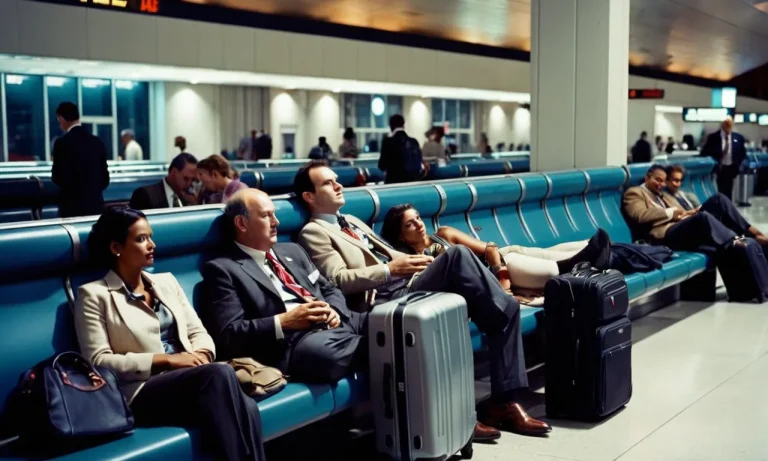
American Airlines Overnight Layover Policy: Everything You Need To Know
Are you taking an American Airlines flight with an overnight layover and wondering about their layover policy? You’ve come to the right place. We have all the key details on American’s rules, accommodations, and tips on making the most of your long layover. If you’re short on time, here’s the quick answer: American Airlines does…

Is Flight Of The Hippogriff Scary? An In-Depth Look
If you’re afraid of heights or rollercoasters, you may be wondering – is Flight of the Hippogriff scary? At first glance, this small family rollercoaster in The Wizarding World of Harry Potter may seem tame. However, its twists, turns, and rickety feeling could startle some riders. Here’s a quick answer: For most riders, Flight of…

Los Mejores Restaurantes En Medellín
Medellín es conocida por su vibrante escena gastronómica que ofrece una amplia variedad de sabores locales e internacionales. Desde cocina gourmet hasta comida callejera auténtica, Medellín tiene algo para todos los gustos. Si no tienes mucho tiempo, aquí está una rápida respuesta a tu pregunta: los mejores restaurantes en Medellín en 2023 son El Cielo,…

Can You Smoke In Casinos In Las Vegas?
Walking through a Las Vegas casino, you may notice wisps of smoke swirling around slot machines and gaming tables as people enjoy cigarettes while they gamble. So can you smoke in Las Vegas casinos? The quick answer is yes, smoking is allowed in many Las Vegas casinos due to exemptions in Nevada’s clean indoor air…

Will Top Thrill Dragster Reopen In 2023?
The fate of Cedar Point’s beloved but troubled Top Thrill Dragster roller coaster has been uncertain since an incident in 2021 severely injured a guest. If you’re short on time, here’s a quick answer: There is still no definitive word on whether Top Thrill Dragster will reopen in 2023, but signs are pointing to the…
Throughout History
A blog about antiques and history, shipboard life during the age of sail.
Before the 1930s, commercial air-travel was but the dream of fools. And before the mid 1800s, an ocean-voyage in a ship powered by something other than oars or the wind, was seen as absurd. From the earliest days of the Age of Sail, starting in the 1500s, until sailing ships were finally declared obsolete by the faster and more powerful steamships, life at sea was hard, dangerous and scary, even at the best of times. A voyage from England to America, India or even as far as Singapore or Australia, took weeks, even months of travel-time, stopping off at ports on the way, to pick up fresh supplies and to deliver and pick up cargo.
What was life onboard a sailing ship like? What kind of food did people eat? How did they sleep? Go to the toilet? How the hell did they even know where they were GOING? These questions, and more, will hopefully be clearly answered in the contents of this post.
Navigation.
Arguably, the most important part of a sea-voyage was navigation; knowing where the hell you were going, and how to get there. Navigation required a lot of skill when you were out in the middle of the ocean without a landmass within sight to act as a point of reference. So, how was it done?
Determining direction was easily accomplished by using a standard compass, with a needle which would point to Magnetic North. Using a compass, you could determine your direction. This was easy enough; even without a compass you could determine your direction, based on the movement of the sun. But how did you determine your position?
Finding out your co-ordinates (the two reference-points which, when put together, would pinpoint your position on the globe), took considerably more skill. Using a sextant or octant, you were able (by measuring the angle of the sun against the horizon), to determine how far north or south you were. This, with some practice, became fairly easy. The real challenge was determining how far east or west you were, from a given point. Longitude (east-west bearing) had been nearly impossible to determine accurately, until the last quarter of the 18th century. An English clockmaker named John Harrison created the world’s first marine chronometer, a clock (or watch) which was accurate enough to be used for navigation at sea. The most accurate clocks in the world at the time, were big longcase pendulum clocks (grandfather clocks). While they could keep almost dead-accurate time, they were useless out in the middle of the ocean, where the waves would throw the pendulum-swing out of kilter. Pocket-watches small enough to be brought out into the ocean were too inaccurate to serve as reliable time-standards. Over the years, Harrison refined his chronometer until it was good enough to be used at sea. His reward for his invention? A princely ten thousand pounds from the British government.
The Marine Chronometer.
The marine chronometer was arguably the most important invention of the 18th century. Without it, ocean-travel as we know it today, would likely never have taken place at all. Using the chronometer (which was set at Greenwich Mean Time), a navigator could determine how far from land he was, by counting the time-difference between the time on the clock, and the position of the sun at noon each day. Marine chronometers (‘chronos’ meaning ‘time’, ‘meter’ for ‘measure’), had to be incredibly accurate. A variation of just a few seconds each day, was enough to throw a ship off-course by MILES. In his voyage from England to Australia in the 1780s, Captain Cook (who agreed to test Mr. Harrison’s new invention), recorded in his papers that this newfangled clock managed to keep an accuracy of +/-5 seconds after one month at sea. Now that’s good timekeeping!
With navigation solved, the ship was ready to be provisioned. What kinds of things did a ship carry back in the 1700s?
Provisions.
When a sea-voyage could last a month at its shortest, stocking enough provisions onboard ship was of vital importance. Provisions included everything. Water, food, spare sails, spare spars, spare ropes, nails, oakum, pitch, tar, gunpowder, shot, cargo, medical supplies, clothing, candles, coal, timber and oil.
The modern refrigerator as we know it today, did not exist until the 1930s. How the hell did they stop all the food from going rotten?
Preventing food-spoilage was a big problem onboard ships. Captains typically loaded their vessels with foods that could last for weeks or months without needing refrigeration. So how was it done?
Shipboard food included such delicacies as salted pork, dried or salted fish, hard-tack (also called a ship’s biscuit), grains such as oats or cornmeal, and maybe a bit of nice cheese. Drinks included barrels of water, wine, rum and grog (which was watered-down rum). So, what were all these things?
Pork was salted. That is to say, it was packed into massive barrels of salt, to preserve it. Fish was either dried, to prevent it from going mouldy, or it too, was packed into barrels and salted. Grains such as oats, barley and cornmeal, which would be used for making porridge, were stored in sacks and barrels, tightly sealed. And last but not least, there was the ever-present, ever-despised hard-tack or the ‘ship’s biscuit’.
If you’ve ever eaten an ANZAC biscuit, you’ll know how hard and tough it can be. Hard-tack made ANZAC biscuits feel like overcooked pasta. Hard-tack was a special kind of cookie which was baked so that when it came out of the oven, it was literally rock hard. You could drive a nail into a plank of wood with this thing, and it wouldn’t break. Hard-tack was notoriously difficult to eat. But why did they stock it? Because hard-tack is like the cockroach of foodstuffs. It can survive almost anything. Provided that it was sealed properly and kept dry, hard-tack could keep fresh for months, even years at sea. Hard-tack was so damn tough that if you ate it ‘raw’, you’d probably break your teeth off! So instead, sailors would dunk it into their tea or coffee to soften it up a bit before taking a bite out of it. But before you dunked it into the tea, you had to bang it on the table a few times to knock out the beetles and weevils and other nasty little insects that had taken up residence inside your lunch.
You’ll notice that there is a distinct lack of greenery in the shipboard diet. Keeping things like fruits and vegetables fresh onboard a sailing ship with no fridges, was a nearly impossible task. Fruit goes mouldy after a few days, a few weeks if you’re lucky. And greens were important, and still are important, for preventing the horrific disease called scurvy.
Scurvy was nasty. It caused your joints to ache, it made your gums bleed, it made you go dizzy and faint, and when it was really bad, your teeth rotted and you’d be spitting your pearly-whites all over the floor. To prevent this, sailors drank great quantities of fruit-juice. It’s for this reason that British sailors were called “Limeys”; because they drank gallons and gallons of lime-juice. On the same ticket, German sailors ate pounds and pounds of sauerkraut. It’s for this reason that Germans are called “Krauts”.
It’s well-known that sailors slept in hammocks onboard ships, even as recently as the mid 20th century. But why would you want to sleep in a rocking, rolling hammock that could pitch you out onto the floor when the ship hit a swell?
Ship’s hammocks are not like garden hammocks. They’re more compact. When you get in, the sides of the hammock spring upwards and wrap around you, so that you’re as snug as a bug in a rug. Being wrapped up like this prevents you from falling out if the ship rolls. Sailors didn’t sleep in beds because there was no room for them. And at any rate, it was easier to be thrown out of a bed than a hammock, during a storm. Naval tradition dictated that when a sailor died, he was sewn up in his hammock (with the last stitch through his nose, to make sure he wasn’t snoozing), he had a pair of holystones (a type of scouring-rock, used to clean the deck) tied, with a rope, around his ankles…and then his body was tipped into the sea.
Open flames were forbidden on sailing-ships. While the only source of light was fire, its use was strictly regulated. All candles had to be housed in lanterns, for extra safety, and the only fire permitted onboard, was in the galley stove. Most ships would have had a stern lantern (a big lantern hammered onto the back of the ship), to act a bit like the tail-light of a car. It would make it easier to spot in the dark. When escaping an enemy ship, captains usually doused the stern lantern to remain hidden in the dark.
Entertainment.
When a sea-voyage could take months at a time, keeping yourself entertained was pretty important. Sailors would play cards, dominoes, chess, checkers or play on whatever musical instruments they had, like flutes or violins. The most well-known aspect of shipboard entertainment during the Age of Sail was the sea-shanty. A shanty was a song which sailors sang onboard ship, while they worked. The most famous shanty, “The Drunken Sailor”, was typically sung when the crew was downstairs, running around the capstan, hauling up the anchor. The chorus “Hey, ho, and up she rises!” was the cue for sailors to start pushing on the capstan-bars to raise the anchor.
Share this:
- Click to share on Twitter (Opens in new window)
- Click to share on Facebook (Opens in new window)
- Click to share on Pinterest (Opens in new window)
- Click to share on Tumblr (Opens in new window)
8 thoughts on “ Shipboard Life during the Age of Sail ”
Very informative and well written, keep this up and you might publish a book on it oneday!
Hey CrazyJose,
Thanks for the comment. Glad you liked it.
was scurvy known as scurvy in the 1500s
I’m not sure. But I see no reason why not. The word ‘Scurvy’ has been around for a while. Since the 1700s at least.
Very well written, wish I knew more about what they would wear and keep their belongings.
did it say about the jobs
Great job, it really helped with my project.
Found my answer:) Aboard ship, the toilet was referred to as the “head.” This term developed during the early 1700s due to the placement of the toilet, a seat with an opening, towards the front end or head of the vessel. Waves of seawater, splashing up towards the bowsprit as the vessel cut a course, naturally cleaned away waste and mess.
Leave a Reply Cancel reply
Your email address will not be published. Required fields are marked *
Notify me of follow-up comments by email.
Notify me of new posts by email.
Ask MetaFilter
Looking for average voyage times in the age of sail september 22, 2014 11:56 pm subscribe.
Outrun Change
We need to learn quickly to keep up with the massive change around us so we don't get run over. We need to outrun change.
Time to cross the Atlantic – 500 year history
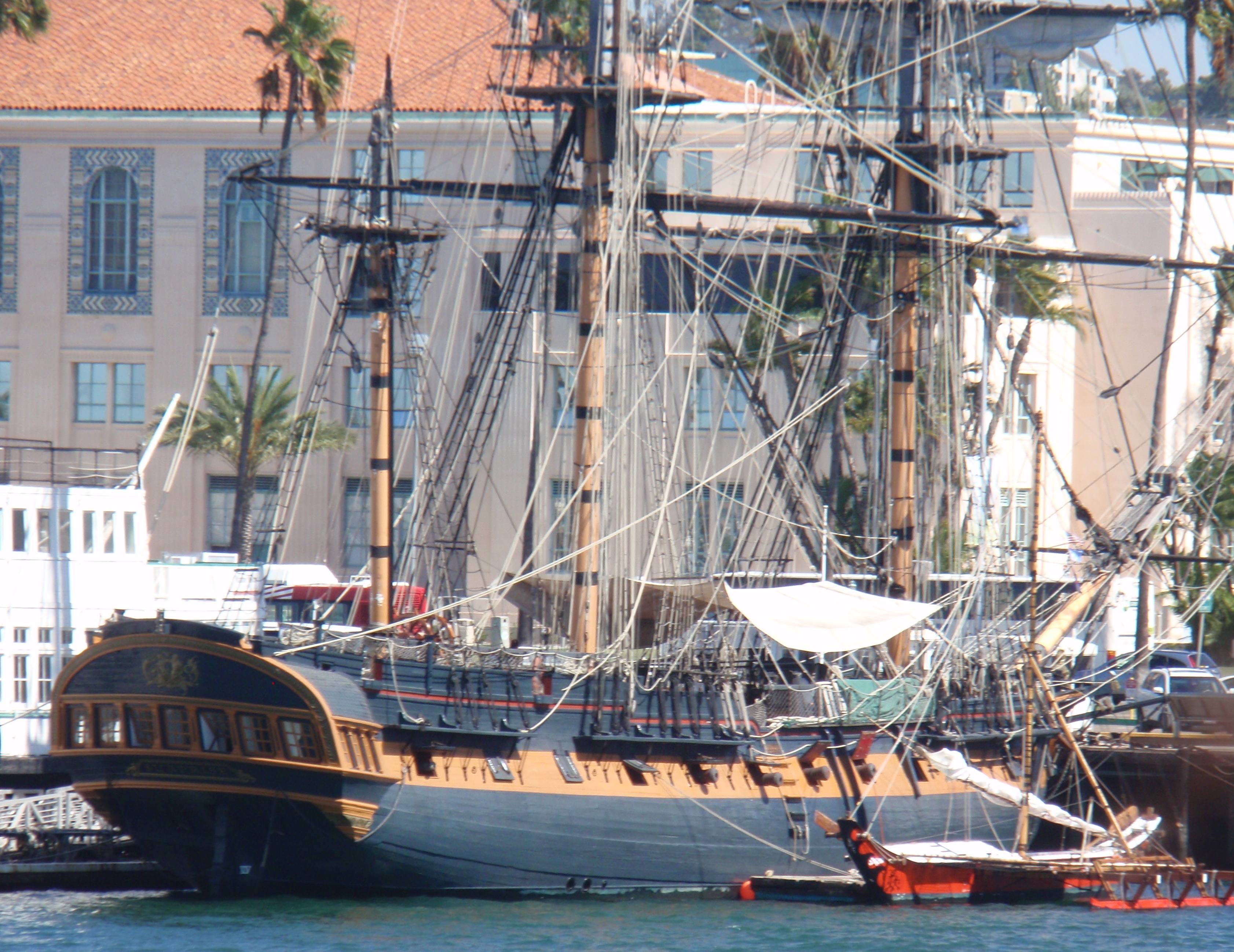
For a thumbnail overview of the radical reduction in time it takes to travel long distances over the last 500 years, look at the time to cross the Atlantic Ocean from Europe to America, provided by Robert Bryce in his book Smaller Faster Lighter Denser Cheaper: How Innovation Keeps Proving the Catastrophists Wrong .
Update – Another post on transatlantic crossings on October 1, 2018: Cost and time to cross the Atlantic has dropped by more than 90% in the last 500 years.
He points out at location 1582 of the Kindle edition:
Columbus’s first voyage across the Atlantic to the New World in 1492 took more than two months. That famous trip launched a centuries-long effort to decrease the amount of time needed to get from Europe to America and vice versa. By the 1700s, sailing ships still needed six weeks or more to make the crossing. The never-ending push for Faster led to the steam engine. By 1845, the SS Great Britain, a steam-powered ship designed by the engineering genius Isambard Kingdom Brunel, was crossing the Atlantic in just fourteen days. A bit more than a century later, in 1952, the ocean liner SS United States, designed by William Francis Gibbs, was making the same voyage in just three and a half days, a record that stands to this day. But the United States, like other luxury ocean liners, were destined to go the way of the buggy whip. In the late 1950s and early 1960s, jetliners began traversing the Atlantic in a matter of hours.
For one more data point, the Mayflower took 66 days in 1620 . Call that 9.5 weeks.
For the first transatlantic jet flight , the time was 10.5 hours to New York and 6 hours the other direction with favorable winds, for an average of 8 hours. Propeller planes were making the trip in 14 hours.
So here is a recap of the above-mentioned transit times:
- 1491 – over 2 months
- 1620 – 9.5 weeks
- 1700s – six weeks
- 1845 – 14 days
- 1927 (8/6/23 update) – 33.5 hours, about 1.5 days, Lindbergh flying across Atlantic
- 1952 – 3.5 days
- 1957 – 14 hours by propeller plane
- 1958 – 8 hours – average of first trips by jet
- 1960s – a few hours
- 2015 – 7 hours – plus or minus a few minutes, per search of Travelocity on 11/23/15
- Update – 3.5 hours – Concorde SST
Here is a graph of the 500 year history, leaving out the Mayflower and estimate for 1960s:
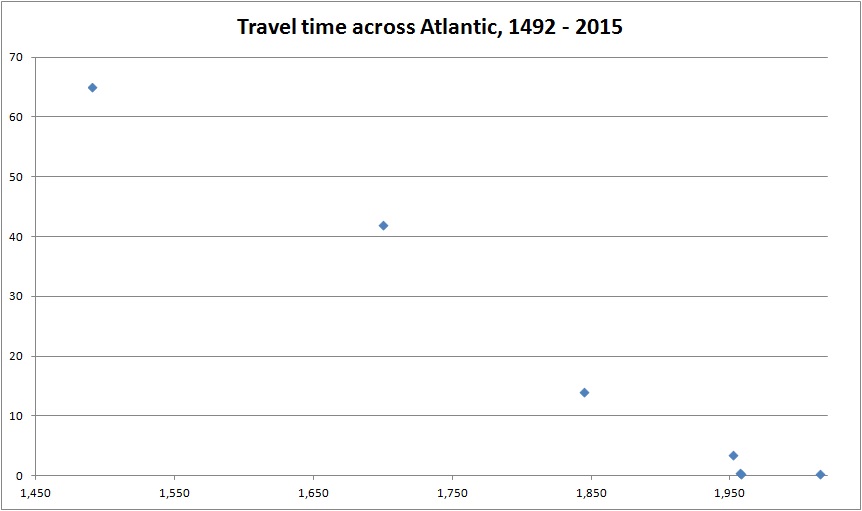
Here is a graph of the last 60 years:

To see a continued trend in the increased speed of travel, we would need to add space shots. That is a topic for another day.
6 thoughts on “Time to cross the Atlantic – 500 year history”
- Pingback: Cost and time to cross the Atlantic has dropped by more than 90% in the last 500 years. | Outrun Change
Major oversight-You didn’t mention the concorde or military jets such as the SR71
Hi Ali W: Great observation. For fun, I added an update at this post . Another 40% drop with the Concorde compared to a 747 is cool, but doesn’t change the cumulative calculation much after the massive previous improvements. Added the Concorde’s 3.5 hours flight time to the data above, but not the graphs. Adding in the SR-71 would drop the travel time even more, with its cruise speed reportedly somewhere around 3,000 mph compared to 1,350 mph cruise speed for Concorde and 570 mph for 747. Thanks for the idea! Jim
Thank you, good summary of crossing speeds! It seems that times for crossing the Atlantic by messages was tied to transportation speeds at first, but then separated – that could form a branch in the diagrams. And yes, the SR-71 Blackbird seems to have a Guinness World Record, NY-London in just under 2 hours – whew! Weapons (missiles) would be another matter, if the have the range.
Charles Lindbergh’s 33.5 hour NY-Paris flight in 1927 would be a proper data point in the huge gap between 1845 and 1952.
Good point. Data added above.
Leave a Reply Cancel reply
Your email address will not be published. Required fields are marked *
Save my name, email, and website in this browser for the next time I comment.
The Geography of Transport Systems
The spatial organization of transportation and mobility
Liner Transatlantic Crossing Times, 1833 – 1952

Note: Liverpool / New York. Source: data from P.J. Hugill (1993) World Trade since 1431, Baltimore: Johns Hopkins University Press, p.128. Stopford, M. (2009) Maritime Economics, Third Edition, London: Routledge.
The passenger liner era roughly lasted for about 100 years, from the mid-19th century to the mid-20th century. Its evolution can be divided into four distinct phases:
- Introduction . The steamship Great Western can be considered one of the first liners in 1838, crossing the Atlantic in 15.5 days. Early liners were made of wood and used paddle wheels, often complemented by sails, as the main form of propulsion. Their capacity was limited to less than 200 passengers. This phase demonstrated the possibility and market potential of transatlantic liner services.
- Growth . By the 1860s, the introduction of iron hulls, compound steam engines, and screw propulsion significantly reduced crossing times to about 8-9 days. No longer limited by the technical limits of wood armatures, the size of liners increased substantially, with a tonnage exceeding 5,000 tons and a capacity of 1,500 passengers. The number and frequency of liner services across the Atlantic (and across the world) increased substantially as the market potential was being realized.
- Maturity . The early 20th century represented the Golden Age of the liner, where those ships dominated long-distance passenger movements. In 1907, the liner Mauretania with a capacity of 2,300 passengers, was able to cross the Atlantic in 4.5 days, a record held for 30 years until the liner Queen Mary reduced the crossing time by half a day (4 days). Liners reached their operational capacity of around 1,500 to 2,000 passengers, and Atlantic crossing times stabilized around 5 days. They relied on quadruple screws using turbine steam engines. This also corresponded to the peak American immigration years from European countries, a process to which liners contributed substantially.
- Obsolescence . By the 1950s, the prominence of the liner was challenged by the first regular transatlantic commercial flights. This challenge quickly asserted itself, and in a decade, the liners shifted from being the main support of transatlantic passenger movements to complete obsolescence. One of the last liners, the United States (mainly made of aluminum), held the transatlantic crossing speed record of 3.5 days in 1952. By the 1960s, air transportation had overtaken the supremacy of liners for transatlantic crossings, and reference time became hours instead of days. Liner services disappeared, and the surviving ships became the first cruise ships .
The usage of ships for carrying passengers is now restricted to cruise shipping, ferries, and small-scale passenger crafts in archipelago countries (Indonesia, the Philippines, Greece, the Caribbean) or great river systems in developing economies (Chang Jiang, Huang He, Nile, and Amazon).
Share this:

Time to Cross the Atlantic by Sailboat: A Comprehensive Guide
Alex Morgan
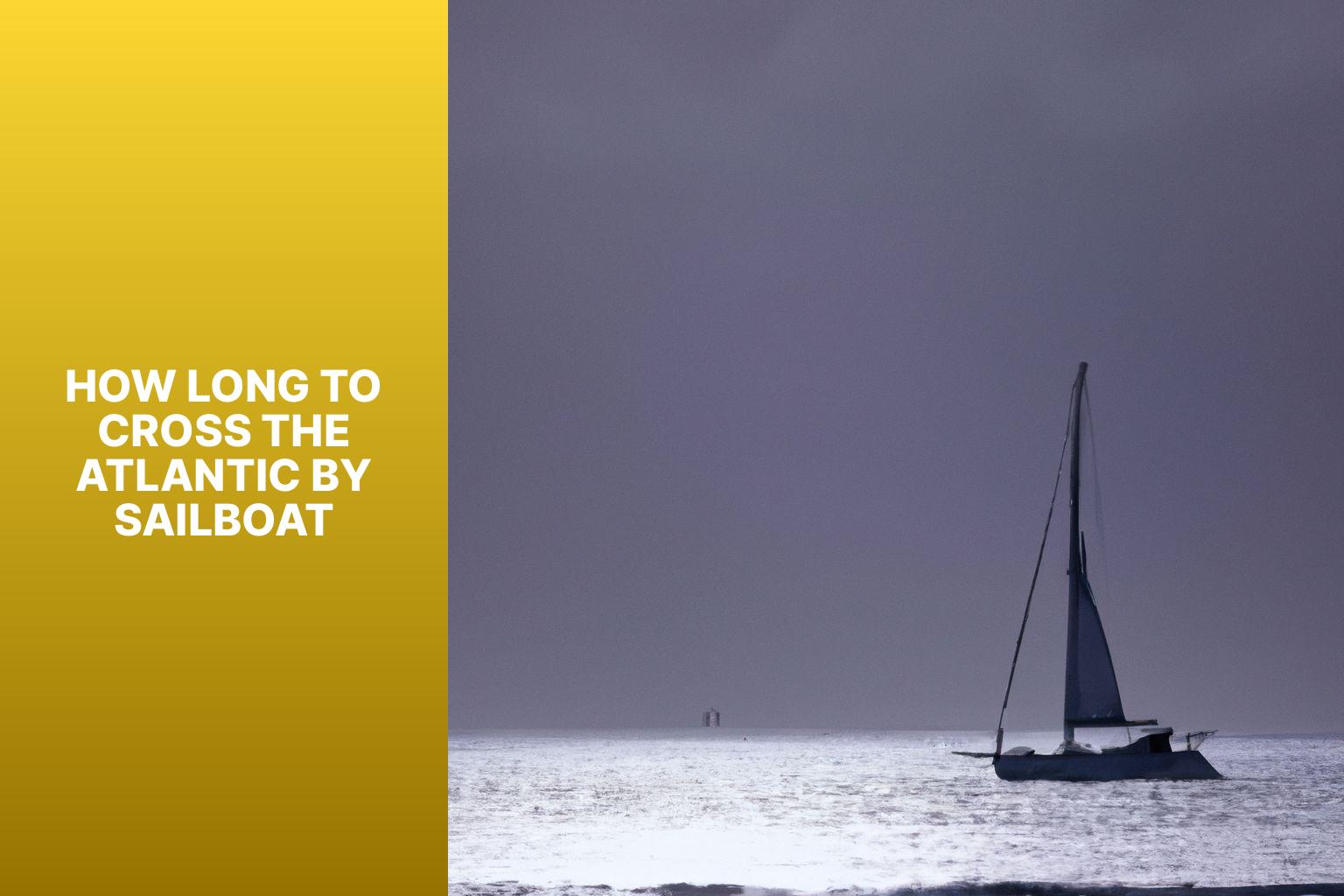
Crossing the Atlantic by sailboat is a thrilling and challenging adventure that requires careful planning and preparation. The duration of the crossing can vary depending on several factors. To provide you with a better understanding, let’s delve into the details.
The Atlantic crossing refers to the journey of sailing across the Atlantic Ocean from one continent to another. It is a significant achievement for sailors and offers a unique experience of being surrounded by vast open waters for an extended period.
Several factors come into play when determining the duration of an Atlantic crossing. These factors include:
The chosen route significantly impacts the duration of the journey. Sailors can opt for the trade wind route, northern Atlantic route, or southern Atlantic route, each offering different challenges and opportunities.
The type and size of the sailboat also affect the duration. Factors such as speed, stability, and design of the sailboat contribute to the overall performance during the crossing.
Weather conditions, including wind patterns, currents, storms, and calms, play a crucial role in determining the speed and progress of the sailboat. Unpredictable weather can lengthen the crossing.
The skill and experience of the crew members onboard influence the efficiency of sailing maneuvers, navigation, and decision-making. A well-prepared and experienced crew can optimize the sailing process.
There are three main routes commonly used for crossing the Atlantic by sailboat:
The trade wind route follows the prevailing easterly winds, known as the trade winds. This route takes advantage of consistent winds and is the most popular and direct route for sailors.
The northern Atlantic route involves sailing closer to the polar regions, taking advantage of the prevailing westerly winds. This route allows for unique experiences and challenges due to colder temperatures and potentially hazardous weather conditions.
The southern Atlantic route involves sailing closer to the equator, where winds are often weaker and the crossing requires careful navigation. This route offers opportunities for exploring tropical areas but can be challenging due to unpredictable weather patterns.
The duration of an Atlantic crossing varies depending on the chosen route, weather conditions, and sailboat performance. On average:
The trade wind route typically takes around 18 to 21 days to complete.
The northern Atlantic route can vary from 15 to 30 days , depending on weather conditions and specific route choices.
The southern Atlantic route can take anywhere from 20 to 40 days due to weaker winds and potentially longer distances.
To ensure a successful and safe Atlantic crossing, consider the following tips:
Thoroughly plan the route, provisions, fuel, and necessary equipment. Adequate preparation is key to a smooth voyage.
Stay updated on weather forecasts and make informed decisions based on the expected conditions. Anticipating and avoiding adverse weather can contribute to a safer crossing.
Establish reliable means of communication with shore and other vessels. Regular contact can provide essential support and updates during the journey.
Check and maintain all safety equipment, including life jackets, life rafts, EPIRBs, and fire extinguishers. Safety should always be the top priority.
By understanding the factors influencing the duration, choosing the right route, and following safety guidelines, sailors can embark on a remarkable Atlantic crossing experience.
##Key takeaways:
Key takeaway:
- The duration of crossing the Atlantic by sailboat depends on various factors including the route chosen, type of sailboat, weather conditions, and skill of the crew.
- There are three main routes for crossing the Atlantic by sailboat: the Trade Wind Route, the Northern Atlantic Route, and the Southern Atlantic Route.
- The average duration of crossing the Atlantic varies according to the chosen route, with the Trade Wind Route being the fastest.
- Tips for a successful and safe Atlantic crossing include proper planning and preparation, monitoring weather conditions, maintaining good communication, and ensuring the availability of safety equipment.
What Is the Atlantic Crossing?
The Atlantic Crossing , also known as sailing across the Atlantic Ocean , is a challenging voyage that requires careful planning and preparation. Factors such as the route chosen , the type of sailboat used , weather conditions , and crew experience all play a role in this adventure.
The route for the Atlantic Crossing depends on the time of year and weather patterns. There are various popular routes to choose from, including the Trade Wind Route , the Northern Atlantic Route , and the Southern Atlantic Route . Each route presents its own set of challenges and advantages.
The choice of sailboat impacts the duration of the journey. It’s important to consider factors such as the size, stability, and performance capabilities of the sailboat . As weather conditions along the route can change rapidly, the type of sailboat can affect crossing speed and overall safety.
Having a skilled and experienced crew is crucial for a successful Atlantic Crossing . They must possess essential skills including navigation , sailing techniques , safety procedures , and emergency preparedness . With a knowledgeable and experienced crew , the journey can be made smoother and safer.
Factors Affecting the Duration of Atlantic Crossing
Planning an Atlantic crossing by sailboat? Get ready to explore the factors that impact the duration of this incredible journey. From the chosen route and type of sailboat, to the ever-changing weather conditions and the skill of the crew, each variable plays a crucial role in the time it takes to traverse the vastness of the Atlantic. So, grab your compass and chart, as we dive into the elements that shape the ultimate adventure across the open seas.
When planning an Atlantic crossing by sailboat, choosing the right route is crucial in determining the duration of your journey. Here are the steps to consider when deciding on the best route:
1. Research the Trade Wind This is the most popular and direct route across the Atlantic. It takes advantage of the steady easterly winds, also known as the trade winds.
2. Explore the Northern Atlantic Set sail north towards Iceland and then turn east to avoid the doldrums and harness the powerful westerly winds.
3. Consider the Southern Atlantic Head south towards the Canary Islands and then catch the trade winds to cross the Atlantic. While this route is longer, it offers a more enjoyable downwind passage.
4. Assess the weather conditions: Examine weather patterns and forecasts to determine which route will have the most favorable conditions during your planned crossing.
5. Evaluate the sailboat’s capabilities and speed: Take into account factors such as size, design, equipment, and performance under different wind conditions.
6. Factor in the crew’s skill and experience: Their ability to handle various sailing conditions and make strategic decisions will influence the choice of route and overall duration.
7. Choose the route that aligns with your goals and preferences: Consider the desired level of challenge, the sights along the way, and any specific destinations you want to reach.
By carefully considering these factors, you can determine the optimal route for your Atlantic crossing, ensuring a safe and successful journey.
Type of Sailboat
The type of sailboat is crucial when planning an Atlantic crossing. Various sailboats have different capabilities and features that impact the duration of the journey. Factors to take into account when selecting a sailboat for an Atlantic crossing include:
- Size: Larger sailboats offer more comfort and stability, but may require a larger crew and more resources. The size also affects the boat’s ability to handle harsh weather conditions.
- Design: The design of the sailboat influences its speed, maneuverability, and stability. Some sailboats are specifically designed for long-distance voyages and ocean crossings, featuring a full keel for stability and a cutter rig for versatility.
- Sail Configuration: The configuration of the sails, including the number and type, affects performance in different wind conditions. Certain sailboats have a single mast with a mainsail and jib, while others have multiple masts and various sail combinations.
- Equipment: On-board equipment, such as navigation systems, autopilot, and safety gear, enhances crew safety and efficiency during the crossing. It is vital to choose a sailboat that is equipped with the necessary systems and equipment for a successful journey.
- Construction: The construction materials and methods used for building the sailboat impact its durability and seaworthiness. Common materials include fiberglass, aluminum, and steel, each with their own advantages and considerations.
- Experience: The experience and skill level of the crew are crucial when handling the sailboat during an Atlantic crossing. It is important to choose a sailboat that matches the crew’s level of experience and expertise.
Considering these factors helps in determining the best sailboat for a safe and successful Atlantic crossing.
Weather Conditions
When crossing the Atlantic by sailboat, weather conditions are crucial.
1. Wind: Sailors rely on favorable wind to make progress. Strong and consistent trade winds, blowing from east to west, are ideal.
2. Storms and hurricanes: Weather systems in the Atlantic can be unpredictable and potentially dangerous. Sailors need to be aware of the hurricane season and avoid storm-prone regions. Monitoring forecasts and navigating around adverse weather is essential for safety.
3. Sea states and waves: The Atlantic Ocean can have large swells and waves, especially during storms. Sailors need to be prepared and have a capable boat.
4. Fog and visibility: Fog impairs visibility and makes navigation challenging. Sailors must be cautious and have radar and navigation aids for safe navigation.
5. Ocean currents: The Atlantic has various currents that can help or hinder progress. Knowledge of these currents, like the Gulf Stream, helps sailors plan routes efficiently.
Understanding current and forecasted weather conditions is crucial for a successful and safe Atlantic crossing. Sailors should consult weather charts, use modern forecasting tools, and consider professional meteorologists. By considering weather conditions, sailors can optimize their route, adjust their sail plan, and ensure a smoother crossing.
Skill and Experience of the Crew
The success and safety of an Atlantic crossing by sailboat heavily rely on the skill and experience of the crew. Their expertise can have a significant impact on the duration of the journey, as a well-trained and experienced crew is capable of navigating more efficiently. Let’s explore the various aspects where the crew’s skill and experience come into play.
Firstly, navigation plays a vital role in determining the duration of the crossing. With their expertise and experience, a skilled crew can choose the most efficient routes, avoiding unnecessary detours and delays. By making informed decisions, they can optimize the sailing path, ultimately reducing the overall time taken.
The crew’s sailing techniques are crucial in maximizing speed and efficiency. An experienced crew knows the most effective techniques to employ, allowing them to harness the wind’s power and propel the sailboat forward swiftly. By implementing these proven methods, they can cover more distance in a shorter amount of time.
In the event of emergency situations, the crew’s experience becomes invaluable. With their knowledge and practice, they can quickly and effectively handle unforeseen circumstances, minimizing disruptions and delays. Their ability to remain calm and composed during such situations ensures that the journey remains on track, preventing any unnecessary setbacks.
Effective crew coordination is another key factor in a successful Atlantic crossing. Through clear communication and mutual support, the crew can ensure smooth operations and timely decision-making. This cohesion fosters an environment where everyone understands their roles and responsibilities, enabling efficient teamwork and the ability to adapt to changing circumstances.
It is important to note that crew members must undergo appropriate training and gain experience in various sailing conditions before attempting an Atlantic crossing. By building their skills and experience through shorter voyages and training programs, they can enhance their confidence and proficiency. This cultivation of competence and capability ensures the crew is well-prepared for the challenges they may face during the journey across the Atlantic.
Routes for Crossing the Atlantic by Sailboat
Looking to set sail across the vast Atlantic by sailboat? Let’s explore the numerous routes available for this incredible adventure. From the renowned Trade Wind Route to the lesser-known Northern and Southern Atlantic Routes, each option offers its own unique challenges and rewards. Whether you seek steady winds or a more adventurous path, these sub-sections will unveil the secrets and possibilities of each route, helping you plan your epic journey across the Atlantic Ocean.
Trade Wind Route
The Trade Wind Route is a popular route for crossing the Atlantic by sailboat. Sailors on this route can take advantage of the consistent easterly trade winds in the subtropical regions. These winds are caused by temperature differences and the Earth’s rotation.
The trade winds on this route typically blow at speeds of 10 to 25 knots , occasionally gusting stronger. Sailors can expect a smooth journey with smaller waves and less challenging weather compared to other routes.
The duration of the Atlantic crossing varies based on factors such as boat size , type, crew experience , and weather conditions. On average, it takes 14 to 21 days to complete this crossing.
To navigate the Trade Wind Route successfully, sailors should plan, prepare, monitor weather conditions, maintain communication, and ensure safety equipment is in place . Following these guidelines ensures a safe and enjoyable crossing.
Northern Atlantic Route
The Northern Atlantic Route is a popular sailboat route between Europe and North America . It offers an adventurous journey across the Atlantic Ocean .
Factors to consider when taking the Northern Atlantic Route include:
– Route Distance: The route covers approximately 2,800 nautical miles .
– Weather Conditions: The Northern Atlantic can have unpredictable weather with variable winds and potential storms. Sailors need to be prepared for adverse conditions and strong currents .
– Strong Currents : The North Atlantic Drift is a strong eastward-flowing current that can affect the progress of sailors. It is important to consider these currents when planning the route and timings.
– Potential Hazards: Icebergs are a potential hazard, especially in the Labrador Sea . It is crucial to be aware of these hazards and navigate safely around them.
– Duration: The duration of the journey can vary depending on factors such as weather conditions, boat size and speed, and crew experience. On average, it takes between 15 to 25 days to complete the journey.
When planning a sailboat journey on the Northern Atlantic Route , sailors should carefully consider the distance, weather conditions, strong currents, potential hazards, and expected duration. Adequate preparation, monitoring of weather conditions, and good communication are essential for a safe and successful crossing.
Southern Atlantic Route
The Southern Atlantic Route is a popular choice for sailors crossing the Atlantic. It offers a unique experience compared to other routes.
1. Strong Trade Winds: The route experiences strong and consistent trade winds blowing from the southeast. These winds provide favorable conditions for sailing and can increase speed.
2. Great Circle Route: The Southern Atlantic Route follows the shortest distance between two points on a globe. This allows for a more direct and efficient path, reducing the duration of the crossing.
3. Warmer Climate: Sailing along this route means encountering a warmer climate compared to northern routes. The waters are generally calmer, making it a more comfortable journey.
4. Wildlife and Scenic Views: Sailors have the opportunity to witness diverse marine life and enjoy picturesque views. Dolphins, whales, and other marine creatures are often spotted along the way.
5. Possible Stopover: Some sailors choose to make a stopover in Cape Verde , an archipelago off the coast of West Africa. This allows for a break in the journey and an opportunity to restock supplies.
The Southern Atlantic Route provides an exciting and challenging adventure for sailors. With its strong trade winds, shorter distance, and beautiful scenery, it is a popular choice for those seeking a memorable journey.
Average Duration of Atlantic Crossing
Ready to embark on a journey across the vast Atlantic? In this section, we’ll explore the average duration of an Atlantic crossing, providing insights into various routes such as the Trade Wind Route , Northern Atlantic Route , and Southern Atlantic Route . Discover the importance of proper planning, vigilant monitoring of weather conditions, effective communication, and ensuring essential safety equipment is in place. Get ready to set sail and unlock the secrets of crossing the Atlantic like a seasoned sailor.
The Trade Wind Route is a popular route for sailing across the Atlantic due to its favorable wind patterns. These winds, known as trade winds, blow from east to west in the tropics. The route starts from the Canary Islands and heads west towards the Caribbean or South America .
Sailing along the Trade Wind Route offers advantages. The trade winds provide consistent and steady winds, making it easier to maintain a good sailing speed. The route offers a smooth and comfortable passage with less rough seas compared to other routes. The Trade Wind Route allows sailors to take advantage of warm and pleasant weather conditions in the trade wind belt.
The time it takes to cross the Atlantic via the Trade Wind Route varies depending on factors such as sailboat size, speed, weather conditions, and crew experience. On average, it takes around 15 to 21 days to complete the crossing using this route. It’s important to note that these are rough estimates and actual crossing times can vary.
Fact: Some sailors have reported completing the Atlantic crossing via the Trade Wind Route in under two weeks, while others have taken over a month. The duration largely depends on the specific conditions encountered during the voyage.
The Northern Atlantic Route is an important consideration for sailors planning to cross the Atlantic by sailboat. The duration of the crossing via this route is influenced by various factors. The route itself, sailing from Europe to North America, can be longer due to distance and prevailing wind and current patterns. The type of sailboat used also impacts the duration, as different boats have different speeds and capabilities. Weather conditions along the route, including storms, wind patterns, and currents, can significantly affect the crossing time. The skill and experience of the crew onboard also play a role in navigating the route efficiently. Sailors should carefully consider these factors for a safe and successful journey.
The Southern Atlantic Route is popular for sailboat crossings due to favorable weather conditions and reliable wind patterns. This route, also known as the Cape Town Route , starts from Europe or the Americas and heads south towards the Canary Islands . Sailors then continue southwest across the Atlantic Ocean towards their final destination in South America or South Africa .
The Southern Atlantic Route offers consistent trade winds and mild weather compared to other routes. The prevailing winds blow from the southeast, providing a steady breeze that helps propel the sailboat forward. This makes it easier to maintain a good average speed and complete the crossing efficiently.
The duration of the Southern Atlantic Route can vary depending on factors such as sailboat type, crew skill and experience, and specific weather conditions encountered. On average, the crossing from Europe to South America takes around 20 to 30 days, while the journey from Europe to South Africa typically takes around 25 to 35 days.
Sailors navigating the Southern Atlantic Route should be prepared for challenges posed by the open ocean, including unpredictable weather patterns, potential storms, and the need for self-sufficiency. It is crucial to plan and prepare adequately, monitor weather conditions constantly, maintain good communication, and ensure all safety equipment is in place for a successful and safe crossing.
The Southern Atlantic Route has been a preferred route for sailors for centuries, connecting Europe with Africa and South America . The route played a significant role in the Age of Discovery , facilitating the exchange of goods, ideas, and cultures between continents. Today, it continues to be a popular route for adventurous sailors seeking to experience the thrill and challenge of crossing the Atlantic Ocean by sailboat.
Tips for a Successful and Safe Atlantic Crossing
Add tips for a Successful and Safe Atlantic Crossing
Here are some tips for a successful and safe Atlantic crossing:
1. Plan your route carefully, considering weather patterns, currents, and potential hazards. Have charts, navigation equipment, and a reliable GPS system.
2. Prepare your boat by inspecting for wear or damage. Ensure all safety equipment, including life jackets, flares, and a well-maintained life raft, is in good working condition.
3. Stock up on essential supplies like non-perishable food, water, and fuel. Have enough provisions for the entire journey and extra reserves for emergencies or delays.
4. Stay informed about potential hazards or changes in weather conditions by communicating with other sailors and maritime authorities.
5. Develop a detailed sailing plan that includes rest cycles for the crew and potential stops for restocking supplies or refueling.
6. Ensure all crew members are experienced and prepared for the challenges. Conduct regular safety drills and assign specific roles and responsibilities.
7. Monitor weather conditions closely and be ready to alter course or adjust schedule if needed. Prioritize safety above all else.
By following these tips, you can increase your chances of a successful and safe Atlantic crossing.
Plan and Prepare Adequately
When planning and preparing for an Atlantic crossing by sailboat, it is important to plan and prepare adequately to ensure a successful and safe journey. Here are the key steps to follow:
- Research the route: It is crucial to thoroughly research the different routes available for crossing the Atlantic, such as the Trade Wind Route, the Northern Atlantic Route, and the Southern Atlantic Route.
- Check weather conditions: Monitor weather forecasts and have a clear understanding of the typical weather patterns along your chosen route. Take note of any potential storms or unfavorable conditions that may arise.
- Prepare the sailboat: Before setting off, ensure that the sailboat is in good condition and equipped with all the necessary safety equipment. This includes life jackets, flares, a first aid kit, and emergency communication devices.
- Stock up on supplies: Make a comprehensive list of essential provisions needed for the journey, including an ample supply of food, water, fuel, and spare parts. Calculate the amount needed based on the estimated duration of the crossing.
- Create a navigation plan: Develop a detailed navigation plan that includes waypoints, potential stops, and alternative routes. Familiarize yourself with navigational charts and instruments to aid in navigation throughout the journey.
By following these steps and planning and preparing adequately , you can embark on your Atlantic crossing with confidence and peace of mind . Just like Christopher Columbus , who meticulously planned and prepared for his transatlantic voyage , you too can open up new horizons for exploration and have a smooth and safe journey.
Monitor Weather Conditions
When crossing the Atlantic by sailboat, it is crucial to monitor weather conditions for a safe and successful journey. Here are some key points to consider:
1. Check weather forecasts: Stay updated with the latest forecasts for your entire journey. Pay attention to wind patterns, storm systems, and potential hazards.
2. Use weather routing services: Subscribe to a specialized routing service tailored to your specific route. These services can help you navigate around unfavorable weather conditions.
3. Monitor weather systems: Keep a constant eye on changing weather systems, especially tropical storms or hurricanes that can pose a significant threat. Take appropriate measures to avoid these dangerous conditions.
4. Be aware of wind patterns: Understand the prevailing winds along your route for planning and optimizing your sailing strategy. Trade wind routes offer consistent winds for a faster crossing.
5. Consider swell and sea state: Besides wind conditions, pay attention to the sea state. Large swells and rough seas can affect your comfort and safety at sea.
By actively monitoring weather conditions during your Atlantic crossing, you can make informed decisions and adjust your plans accordingly. Remember, safety should always be the top priority.
Maintain Good Communication
Maintaining good communication is absolutely crucial during an Atlantic crossing by sailboat. It is of utmost importance as it guarantees the safety and seamless operation of the voyage.
To ensure effective communication, there are several key steps that need to be taken:
1. Establish clear communication protocols: It is essential to set up a system that allows crew members and the skipper to effectively communicate with each other. This can be achieved by using designated channels such as radios or walkie-talkies for conveying important messages.
2. Implement regular check-ins: Designate specific times for crew check-ins. This enables everyone to report their status, share vital information, and address any concerns that may arise.
3. Create a comprehensive communication plan: Develop a plan that outlines how to communicate with land-based support teams or coastguard services in case of emergencies. This plan should include contact information and the correct procedures to be followed.
4. Maintain good radio etiquette: It is crucial to adhere to proper radio protocols in order to ensure clear and concise communication. Utilize standard phrases and refrain from engaging in unnecessary chatter to prevent any confusion.
5. Utilize technology: Take advantage of modern communication devices, such as satellite phones, that provide reliable coverage even in remote areas. This will enable seamless communication throughout the entire journey.
It is important to remember that maintaining good communication is not solely about accurately conveying information. It also plays a vital role in fostering teamwork and creating a sense of security among the crew members. By communicating effectively, the crew can promptly respond to any changing conditions and thus ensure a safe and successful Atlantic crossing.
Ensure Safety Equipment is in Place
Ensuring safety equipment is crucial for a successful and safe Atlantic crossing by sailboat. Follow these steps:
- Inspect and test all safety equipment before departure, including life jackets, harnesses, tethers, and personal locator beacons, to ensure safety equipment is in place.
- Ensure the boat has proper navigation equipment, such as GPS, charts, and radar, for accurate navigation and to ensure safety equipment is in place.
- Install and regularly check the functioning of essential safety devices like EPIRBs and SARTs, to ensure safety equipment is in place.
- Equip the boat with a well-stocked first aid kit, including necessary medications, bandages, and disinfectants, to ensure safety equipment is in place.
- Have a reliable communication system, such as a VHF radio or satellite phone, to stay in contact with other vessels and emergency services and to ensure safety equipment is in place.
- Ensure the boat has proper fire extinguishers, smoke detectors, and carbon monoxide detectors, to ensure safety equipment is in place.
- Install and regularly test the boat’s bilge pumps to handle water ingress and to ensure safety equipment is in place.
- Keep all essential safety equipment easily accessible and in good working condition, to ensure safety equipment is in place.
- Train the crew on how to use and deploy safety equipment properly, to ensure safety equipment is in place.
- Regularly review and update the safety plan, considering the specific challenges and risks of the Atlantic crossing, to ensure safety equipment is in place.
By following these steps and ensuring safety equipment is in place, sailors can improve their preparedness and enhance the overall safety of the Atlantic crossing.
Some Facts About How Long To Cross The Atlantic By Sailboat:
- ✅ An Atlantic crossing on a sailboat takes an average of 20 to 25 days.
- ✅ It is important to know the shortcuts, maximize speed, and have experience to cross the Atlantic.
- ✅ The best time to cross the Atlantic is between November and February.
- ✅ The total distance of the trip can be as much as 4,000 nautical miles.
- ✅ The trade winds blow from east to west and are predictable due to the rotation of the earth.
Frequently Asked Questions
How long does it take to cross the atlantic by sailboat.
An Atlantic crossing on a sailboat takes an average of 20 to 25 days, but can be completed in two weeks if lucky, take shortcuts, and have a fast sailboat. The time it takes to cross depends on the route, type of ship, size, skills, and speed.
What are the best routes for crossing the Atlantic by sailboat?
There are two main routes for crossing the Atlantic by sailboat: the Southern passage (east to west) and the Northern passage (west to east). The Southern passage starts from Europe and goes to the Canary Islands, Cape Verde, or the Windward Islands. The Northern passage starts from the Caribbean and goes to Bermuda, the Azores, and then the Portuguese coast.
When is the best time to cross the Atlantic by sailboat?
The best time to cross the Atlantic by sailboat is between late November and February, as there is less chance of hurricanes and the water is warmer. Timing is important to avoid the hurricane season, which lasts from June to November.
What are the challenges of crossing the Atlantic by sailboat?
Sailing across the Atlantic can be challenging mentally and physically. It requires sailing expertise, familiarity with weather forecasting and navigation, and the ability to quickly adjust to sudden changes in weather. The trip can also involve long travel, large waves, severe weather, collisions, encounters with whales, and epic proportions of wear and tear on the boat.
What type of sailboat is suitable for crossing the Atlantic?
The best sailboat for crossing the Atlantic should be at least 30 feet long, have a fixed keel, and be sturdy with durable sails. A monohull sailboat is recommended over a sailboat with multiple hulls. The type of boat used affects the speed of travel, and the location can also be a factor.
Can I hire a skipper for the Atlantic crossing if I lack experience?
Yes, hiring an experienced skipper is an option for those without the necessary skills and experience to safely make the journey. A skipper can provide guidance, navigation expertise, and help ensure a successful crossing.
About the author
Leave a Reply Cancel reply
Your email address will not be published. Required fields are marked *
Save my name, email, and website in this browser for the next time I comment.
Latest posts


The history of sailing – from ancient times to modern adventures
History of Sailing Sailing is a time-honored tradition that has evolved over millennia, from its humble beginnings as a means of transportation to a beloved modern-day recreational activity. The history of sailing is a fascinating journey that spans cultures and centuries, rich in innovation and adventure. In this article, we’ll explore the remarkable evolution of…

Sailing Solo: Adventures and Challenges of Single-Handed Sailing
Solo Sailing Sailing has always been a pursuit of freedom, adventure, and self-discovery. While sailing with a crew is a fantastic experience, there’s a unique allure to sailing solo – just you, the wind, and the open sea. Single-handed sailing, as it’s often called, is a journey of self-reliance, resilience, and the ultimate test of…

Sustainable Sailing: Eco-Friendly Practices on the boat
Eco Friendly Sailing Sailing is an exhilarating and timeless way to explore the beauty of the open water, but it’s important to remember that our oceans and environment need our protection. Sustainable sailing, which involves eco-friendly practices and mindful decision-making, allows sailors to enjoy their adventures while minimizing their impact on the environment. In this…
- Share full article
Advertisement
Supported by
Frugal Traveler
Standby Cruising: A New Option for Bargain Seekers
Are you a flexible traveler? Holland America’s standby cruises may be for you. The cost: $49 a day, excluding fees, taxes and extras. The catch: It might be a hair-raising, last-minute scramble.

By Elaine Glusac
Elaine Glusac is the Frugal Traveler columnist, focusing on budget-friendly tips and journeys.
In February, Barb McGowan took a seven-day cruise on Holland America Line, visiting the Bahamas, Turks and Caicos, and the Dominican Republic for just $343, or $49 a day, excluding taxes, port fees and extras. By comparison, Holland America currently lists a seven-day Caribbean itinerary in October from about $700.
The catch: She had just 48 hours’ notice.
Ms. McGown, a 64-year-old from Naples, Fla., who runs a restaurant franchise, took one of the line’s new standby cruises , which are aimed at travelers who live near departure ports and intended to fill ship vacancies.
“I look for deals, and this was an especially good experience,” Ms. McGowan said, praising the food and entertainment. “I was impressed enough to put down a deposit on a future cruise.”
A way to keep ships full
Holland America introduced its standby program last August to maximize ship occupancy, knowing that cancellations are inevitable. So far, the rest of the cruise industry has not followed its lead.
“If cancellations are within a week or two of sailing, it’s difficult to resell that space in the open market,” said Dan Rough, the vice president of revenue management at Holland America.
In the same way that airlines oversell seats, cruise lines may compensate for cancellations by overselling staterooms. Filling in with standbys, however, reduces Holland America’s reliance on overselling, which runs the risk of bumping passengers to distant departures or potentially offering generous cash incentives to coax volunteers to cancel.
Though the company does not heavily promote the new practice, it has attracted a following among the thrifty by dangling a bargain rate — $49 a person, whether sharing a cabin or traveling solo, before taxes and fees — on a web page that lists available departure dates to attract flexible travelers. Standbys should expect an inside cabin, according to the company, though ocean-view and veranda cabins have been assigned. (The company declined to say how many standby cabins it has offered.)
“Forty-nine dollars per person, per day is pretty exceptional,” said Colleen McDaniel, the editor of CruiseCritic.com , a website that reviews cruises, noting that the price covers all meals and entertainment. “You can’t find a cheaper rate at a land resort for what’s included.” (In 2023, the average nightly rate for a hotel room in the United States was nearly $156, according to STR, a data analytics firm that monitors the hospitality industry.)
To participate, travelers choose an itinerary from the standby list on the website — current embarkation ports include Boston; Fort Lauderdale, Fla.; Montreal; Quebec City; San Diego; Seattle; Vancouver, British Columbia; and Whittier, Alaska — and pay for the trip in advance by calling Holland America or booking through a travel adviser.
There are no refunds for standby cruisers who want to back out. However, if the gamble fails to pay off, and the cruise line cannot offer a cabin to someone on the standby list, it issues a refund.
The company says standby offerings are added on a rolling basis and usually lists itineraries within two to three months of departure. Current offerings include seven-day sailings in Alaska’s Inside Passage from April through September and seven-to-11-day trips cruising the coast of New England and Canada’s Maritime Provinces between May and October.
Proximity is a bonus
Standby cruisers don’t learn of their acceptance or denial until a week to two days before departure, complicating transportation arrangements.
“Last-minute airfare could offset the savings on a cruise,” wrote Crystal Seaton, the owner of Road to Relaxation Travel , a travel agency based in Raleigh, N.C., in an email. Though she has not booked a client on a standby sailing yet, she surmised that it is intended for travelers who can drive to a port.
“We were lucky; we found out Tuesday we were going on a Friday 3 p.m. sailing,” said Sheila Valloney, 66, of Clermont, Fla., who with her husband spent nine days aboard a Holland America ship in the southern Caribbean in February by going standby.
Before being cleared, she reserved a parking spot near the ship dock in Fort Lauderdale, which would have set her back about $6 if she canceled. She also kept their vacation clothes ready to go at the last minute for the three-and-a-half-hour drive to port.
Booking a refundable airline ticket — or at least one that guarantees a credit in loyalty points or cash in the event of cancellation — is one way travelers who must fly can take advantage of the deal.
For her standby sailing, Ms. McGowan drove 90 minutes from her home to the ship in Fort Lauderdale. But her travel companion was coming from Indiana, so when she joined the standby list a few months before the departure date, she booked her friend a Southwest Airlines flight using frequent flier points that would be refunded if the last-minute cruise didn’t come through.
Avoiding extra charges
Once on board, charges for extras like cabin upgrades, Wi-Fi, alcohol and shore excursions can inflate the bill, though the thriftiest travelers try to avoid them.
Ms. McGowan sprang for the $17.50-a-day charge for an upgraded drink package (basic nonalcoholic drinks are included in the cruise) and took one shore excursion, focused on coffee growing, which she deemed a good value at $89.
On their Caribbean cruise, the Valloneys asked around for recommendations for good beaches, where they went to relax on port days, and waited until they were on land to check emails, in order to avoid paying for Wi-Fi on the ship.
“We didn’t miss it at all,” Ms. Valloney said. “For beverages, we would wait until happy hour, when it was buy one, get one free.”
Will other companies follow suit?
To date, no other cruise lines have adopted standby programs.
Princess Cruises said it did not plan to offer cabins on a standby basis, but noted that it already offers last-minute deals , which tend to run about $50 to $60 per passenger per day. For example, a seven-day Alaska sailing from Vancouver to Anchorage departing on May 8 is listed at $399 a person in a double-occupancy cabin.
Several other major cruise lines did not respond to inquiries about potentially adopting standby programs, though operators like Royal Caribbean and Norwegian Cruise Line also offer last-minute deals on their websites.
“We would be surprised to see many mainstream cruise lines begin to adopt a similar model” to the standby system, wrote Kimberly Coyne, the head of sales and content strategy for Cruiseline.com , a cruise review site, in an email. She said the standby fares might be financially unsustainable for cruise lines and cited the potential that travelers might become too accustomed to late-booking deals.
More ways to save
With the recent surge in cruise bookings, companies are discounting less, said Ms. McDaniel of CruiseCritic.com.
She identified more reliable ways to get a deal compared with going standby, such as booking during “ wave season ,” a sales period that generally runs January through March, or taking a repositioning cruise, in which a ship relocates from one region to another seasonally. A repositioning itinerary might sail in the fall from Alaska to the Caribbean via the Panama Canal.
“It’s not unusual to see a repositioning cruise at less than $75 per night,” Ms. McDaniel, said, noting that other expenses such as an airline itinerary into one city and returning from another may cost more than a standard round-trip ticket.
Repositioning cruises tend to stop at fewer ports and add more shipboard enrichment programs, such as lectures and activities like cake decorating classes and craft spirits tastings.
“For a lot of people the ship is the destination and this is the perfect activity for people who like to be on the ship,” she said.
Follow New York Times Travel on Instagram and sign up for our weekly Travel Dispatch newsletter to get expert tips on traveling smarter and inspiration for your next vacation. Dreaming up a future getaway or just armchair traveling? Check out our 52 Places to Go in 2024 .
Come Sail Away
Love them or hate them, cruises can provide a unique perspective on travel..
Cruise Ship Surprises: Here are five unexpected features on ships , some of which you hopefully won’t discover on your own.
Icon of the Seas: Our reporter joined thousands of passengers on the inaugural sailing of Royal Caribbean’s Icon of the Seas . The most surprising thing she found? Some actual peace and quiet .
Th ree-Year Cruise, Unraveled: The Life at Sea cruise was supposed to be the ultimate bucket-list experience : 382 port calls over 1,095 days. Here’s why those who signed up are seeking fraud charges instead.
TikTok’s Favorite New ‘Reality Show’: People on social media have turned the unwitting passengers of a nine-month world cruise into “cast members” overnight.
Dipping Their Toes: Younger generations of travelers are venturing onto ships for the first time . Many are saving money.
Cult Cruisers: These devoted cruise fanatics, most of them retirees, have one main goal: to almost never touch dry land .
GOBankingRates works with many financial advertisers to showcase their products and services to our audiences. These brands compensate us to advertise their products in ads across our site. This compensation may impact how and where products appear on this site. We are not a comparison-tool and these offers do not represent all available deposit, investment, loan or credit products.
Retirees Are Spending Their Time and Money on Adventure Trips — Should You?

Commitment to Our Readers
GOBankingRates' editorial team is committed to bringing you unbiased reviews and information. We use data-driven methodologies to evaluate financial products and services - our reviews and ratings are not influenced by advertisers. You can read more about our editorial guidelines and our products and services review methodology .
20 Years Helping You Live Richer
Reviewed by Experts
Trusted by Millions of Readers
There’s no upper age limit to travel, but you might be surprised to learn that the average age of adventure travelers has risen over the past few years. Much of this is due to more accommodating trips and better gear.
Adventure trips can be quite fulfilling, no matter how old you are but it’s all too easy to miss out. If you’re an older traveler, like a retiree , you might want to put a couple of these more thrilling trips on your bucket list. You could have the experience of a lifetime. If nothing else, you’ll have another great story to share with your loved ones.
But before you start planning your first — or next — adventure trip, there are a few things to consider. Chief among them is the cost and whether or not they’re actually worth the money if you’re on a retirement budget .
Adventure Trips Offer an Unforgettable Experience
“Outdoor adventure trips are an amazing way to spend your time and money in retirement,” said Chris Urban, certified financial planner (CFP), retirement income certified professional (RICP) and founder at Discovery Wealth Planning . “I am a huge fan of spending money on experiences as these often lead to long-lasting memories, sometimes with family and friends.”
Whether you go alone or with someone else, very little can quite beat the experience these trips can give you. And especially if you’ve been spending a lot of time indoors or hard at work, taking one of these trips in your retirement years could bring a good deal of personal fulfillment to your life.
Plus, traveling can have positive effects on your mental health. According to WebMD, it can reduce stress and help alleviate certain symptoms related to depression and anxiety.
Retirees Have Better Options Now
Among the biggest deterrents to traveling is the lack of accessible options or accommodations. But things have changed a lot in recent years.
“Today, there is far better infrastructure in place to remove many of the physical limitations of adventure travel, making it easier for retirees to participate. For example, platforms like Cloud of Goods allow individuals to rent mobility equipment — such as scooters and wheelchairs — and have them delivered to their destination,” said Punsri Abeywickrema, founder and CEO of Cloud of Goods .
“This alleviates some of the limitations and stress that have traditionally been associated with travel for older individuals,” he said. “There has also been a strong push to improve accessibility in airports, hotels, theme parks and more, allowing those with mobility issues to still enjoy their well-earned vacations.”
The Changes Aren’t Just Because of Improved Options
“I’ve noticed a definite shift in the adventure travel scene — more and more retirees are opting for ambitious, challenging and exotic trips,” said Michael Donovan, travel expert and the co-founder of StayNewEngland.com . “There’s no doubt improved gear and tailored offerings play a role, but I believe there’s a deeper motivation at work.”
“Many retirees see this new chapter as a chance to finally tick off their bucket list, so they’re willing to invest time and money into making their travel dreams a reality,” he said. “In a way, retirement launches a second youth for some people. With more free time and disposable income, retirees can embark on the epic adventures they’ve always imagined.”
Retirement, Donovan said, isn’t the end of an active lifestyle. It simply marks a transition into something new or different.
Many Older Americans Are in Better Health
Health plays a major role in a person’s ability to travel and go on other adventures. These days, more retirees — especially those who’ve only recently retired — are in better health than older retirees and are looking to take advantage of that.
“Right now, we are near the peak of the population turning 65 years old, often referred to as ‘the Grey Tsunami.’ So, in absolute numbers, there are more retirees than ever before. And travel is at its peak in the first decade of retirement,” said Jennifer Kirby, fiduciary financial advisor and managing partner of Talisman Wealth Advisors .
Many younger Boomers, Kirby said, are in better health than their older counterparts. This is largely due to them giving more attention to health and wellness throughout their lives. It also makes adventure trips more feasible.
“There is often a sense of urgency to have adventure experiences while they are still physically capable,” Kirby said. “What we often see is that retirees frontload the expenses on this kind of travel for the first few years after they stop working and then the spending starts to drop until the very end of their lives when healthcare needs pick up.”
Cost Is Still a Key (But Not Defining) Factor
According to Budget Your Trip , the average cost of a seven-day trip in the U.S. is $3,982 for two people. This includes accommodations, airfare, meals and local transportation. It doesn’t, however, include tickets to things like ziplining, skydiving or water rafting.
That being said, you could still take an adventure trip if you’re on a retirement budget. You might just need to plan your trip a little closer to home.
“Even on a tight budget, retirees can still plan for adventurous travel — whether that’s saving for a bigger international trip or planning for a unique experience closer to home,” Abeywickrema said. “These days, there are so many great resources that can allow older individuals to discover new destinations that may be just a short distance away.”
Limiting how many trips you take can also help ensure you have the resources needed to have the experience of a lifetime.
“Even on a relatively tight budget, adventure trips can still be worth it with the right financial strategies,” said Ann Martin, director of operations of CreditDonkey . “For example, limiting yourself to only one or two trips per year can be a good way to ensure you can see the world without blowing your budget. I also suggest putting aside a small portion of your monthly income in a high-yield savings account or other interest-earning account so you can grow a ‘travel fund’ for yourself.”
Costs To Consider With Adventure Trips
Among other things, the cost of travel is going to vary based on where you’re going, how long you’re going to be there, how many people are coming with you and what you want to get out of the trip. Keeping that in mind, here are a few adventure trips and what they might cost:
- Northern Lights trip: Donovan said a roundtrip flight from the U.S. East Coast to Iceland costs around $400. Add on a campervan rental so that you have somewhere to stay and a means of transportation for around $50 a day and you’ve got most of your trip already sorted.
- Everest Base Camp Trek: An all-expenses-included trek ranges from around $2,500 to $3,500 , though you could end up spending more — or less — based on where you start.
- Week-long cruise: A seven to 10-day cruise could cost around $1,500 per person, depending on factors such as destination, whether you need to fly into the port and cabin type.
- Around the World cruise: According to CNBC , the starting price for one of these cruises, which lasts for about three years and spans all seven continents, is around $29,000.
- Danube River cruise: A Danube River cruise costs anywhere from $2,231 to $10,290 for a weeklong experience that includes most of what you would need.
- Smaller adventure trips: Whether you’re into ziplining, white water rafting, kayaking or snorkeling, prices range quite a bit. Keep things local to save money or combine several options in a bundled tour.
- African safari: Starting at around $150 a night (not including transportation or accommodations), you can do an African safari tour.
More From GOBankingRates
- The Best $20 You Can Spend at Dollar Tree, According to Superfans
- 10 Cars That Outlast the Average Vehicle
- This is One of the Best Ways to Boost Your Retirement Savings in 2024
- 6 Things You Should Never Do With Your Tax Refund (Do This Instead)
Share This Article:
- How Long Will My Money Last?
- How Much Do You Need To Retire?
Learn More About Early Retirement Planning
- Advantages and Disadvantages of Retiring Early
- How To Become Financially Independent To Retire Early
- How To Retire Early and Quit the Daily Grind
- How To Withdraw From a 401(k) Early
Related Content

Social Security
Social Security 2024: How Much Can You Earn and Still Collect Payments?
April 12, 2024

7 Ways Baby Boomers Should Stop Throwing Away Money in Retirement
April 11, 2024

Want To Retire Early but Skip the FIRE Lifestyle? Try This Alternative

Social Security Cuts: 4 Lifelines for Boomers Struggling in Retirement

Retirement Savings: 7 Biggest Obstacles Gen Z Faces In Saving For the Future

How Rich Do You Have To Be To Retire in These 25 Expensive Cities?

16 Best Places To Retire in the US That Feel Like Europe

4 Biggest Social Security Money Scams To Watch Out for in 2024

Social Security: States That Would Be Impacted the Least by Cuts

Cutting Out These 9 Expenses Will Save Retirees Over $29,000 a Year

5 Ways Taxes Could Ruin Your Retirement Savings -- and What To Do

When Should Middle Class Retirees Begin To Take Social Security?

Most Americans Are $1.37 Million Behind on Retirement Savings Goals, Survey Finds
April 10, 2024

First 5 Years of Retirement: 7 Money Moves You Absolutely Must Make

5 States Where Social Security Cuts Wouldn't Matter to You

5 Things Most Americans Don't Know About Social Security

Sign Up For Our Free Newsletter!
Get advice on achieving your financial goals and stay up to date on the day's top financial stories.
By clicking the 'Subscribe Now' button, you agree to our Terms of Use and Privacy Policy . You can click on the 'unsubscribe' link in the email at anytime.
Thank you for signing up!

BEFORE YOU GO
See today's best banking offers.

Sending you timely financial stories that you can bank on.
Sign up for our daily newsletter for the latest financial news and trending topics.
For our full Privacy Policy, click here .
Mayflower II will travel through Cape Cod Canal soon. Here's how you can track the ship.

As long as tides and weather cooperate, the Mayflower II will be homeward bound from the Mystic Seaport on April 10, setting off at about 10:30 a.m., according to the Plimoth Patuxet Museums .
For anyone hoping to catch a glimpse of the tall ship traversing the Cape Cod Canal on the way to her home berth alongside State Pier at Pilgrim Memorial State Park in Plymouth, her progress can be tracked by visiting www.tinyurl.com/trackMayflower2 , a service of marinetraffic.com.
Once it leaves the seaport, the Mayflower II will travel non-stop to Plymouth Harbor. The journey, approximately 78 miles, will take about 20 to 25 hours. It's possible its passage through the canal could begin in the early morning hours of April 11.
"We will give an ETA once the ship actually gets underway and we are better able to determine," said Plimoth Patuxet Director of Marketing & Communications Rob Kluin .
Although it may traverse the canal while it is still dark, with the lighting that exists along the waterway, spectators would still be able to see the ship as it passes through, according to Kluin. It will take the ship about an hour to traverse the canal.
The 102-foot wooden vessel will not be under sail — the sails have yet to be bent onto the yards, Kluin said — but will instead be towed the entire way by Stasinos Marine out of Weymouth, Kluin said. It will be crewed by the Plimoth Patuxet maritime preservation and operations team led by Capt. Whit Perry. They will not be in period costumes for the voyage.
The crew recently completed up-rigging the ship — putting up spars, blocks and rigging — in preparation for her trip home, according to a post on the Plimoth Patuxet Museums' Facebook page .
The 67-year-old ship, a full-scale reproduction of the vessel that brought the first European immigrants to the shores of Patuxet more than 400 years ago, has been in dry dock at the Henry B. duPont Preservation Shipyard in Mystic, Connecticut since arriving there Dec. 1. Over the winter, it underwent routine maintenance, including cleaning the bottom, painting and caulking the seams. The work was funded by a Save America's Treasures grant from the Institute of Museum and Library Services .
The travel schedule is subject to change, depending on tide, weather and other factors. The Plimoth Patuxet Museums will also have updates on its Facebook page .
Mayflower II is slated to be open to the public at her Plymouth berth starting at 9 a.m. on April 13. According to Plimoth Patuxet Museums Executive Director Ellie Donovan, the ship has seen millions of visitors from around the world since it arrived in Plymouth as a gift to the museum from England in 1957.
“We are thankful for IMLS recognizing the importance of this treasured landmark and for helping to ensure she will be preserved for generations to come," Donovan said.
Heather McCarron can be r eached at [email protected] , or follow her on X @HMcCarron_CCT
Thanks to our subscribers, who help make this coverage possible. If you are not a subscriber, please consider supporting quality local journalism with a Cape Cod Times subscription. Here are our subscription plans.
- Skip to main content
- Keyboard shortcuts for audio player

Solar eclipse 2024: Follow the path of totality
Solar eclipse, what you need to know to watch monday's total solar eclipse.
The NPR Network
A stunning celestial event is visible across the country Monday, when the moon crosses directly in front of the sun: a total solar eclipse. For those in the path of totality, there will be a few brief moments when the moon completely covers the sun and the world becomes dark.
Traveling for totality? Skip ahead.
This will be the last chance to catch a total solar eclipse in the continental U.S. for about 20 years, so here's what you need to know to safely enjoy!
When is the eclipse?
April 8, 2024 there will be a total solar eclipse that crosses from the Pacific coast of Mexico through the United States.
What is totality and why it matters
According to NASA , totality will start around 11:07 a.m. PDT/1:07 EDT in Mexico and leave Maine at around 1:30 pm PDT/3:30 pm EDT.

Here's what time the eclipse will be visible in your region
Check out this table for when the partial eclipse and totality are visible in each region or check by zip code here.
A partial solar eclipse will be visible across the contiguous United States, so even if you're not directly in the path, you should be able to see something special, weather permitting.
Unable to get to totality? We'll be sharing highlights here from across the NPR Network throughout the day Monday if you can't see it in real time.
Where to see totality?
More than 30 million people live in the path of totality for Monday's eclipse, and many more in nearby areas.
Here's what we know about Monday's weather forecast.
Why totality matters
As NPR's Neil Greenfieldboyce explains , "During a total eclipse, the sky darkens suddenly and dramatically . The temperature drops. Stars come out. Beautiful colors appear around the horizon. And the once-familiar sun becomes a black void in the sky surrounded by the glowing corona — that's the ghostly white ring that is the sun's atmosphere."

Eclipse Science
For april's eclipse, going from 'meh' to 'omg' might mean just driving across town.
A partial eclipse, while still a fun experience, is hardly as dramatic. Those with a view of the partial eclipse will see crescent-shaped shadows like those seen here in 2017.
How to watch safely
If you plan to look directly at the eclipse (partial or totality), you're going to need eclipse glasses handy because looking directly at the sun without proper protection ( traditional sunglasses don't count! ) can be harmful to your eyes.

The perfect celestial soundtrack to the total solar eclipse
As NPR's Joe Hernandez explains, "Proper eye protection must be worn throughout a total solar eclipse — except for the roughly 3 1/2 to 4 minutes when the moon fully obscures the sun, a brief period known as 'totality.' (You will need to take your glasses off during totality to actually see it.)"
If you don't have access to eclipse glasses, you can get crafty with things you have around the house ( like some of us did back in 2017!) More on that here.
Traveling for totality?
The celestial event is driving a ton of domestic travel to the path of totality. If you're headed out of town to view the eclipse, here are some NPR Network resources for areas in the path of totality:
Texas The path of totality crosses through the Lone Star State, with some areas expecting a possible influx of visitors in the hundreds of thousands to catch prime viewing. Our member stations across the state have gathered local resources to help you navigate the region and the eclipse!
- San Antonio: Check out the latest from Texas Public Radio
- Dallas: Explore KERA's coverage for the latest
- Austin: Head to KUT for the best local resources
Arkansas The eclipse will be cutting through the state, putting Little Rock in the path of totality. Check out Little Rock Public Radio for local resources.
The southwestern edge of the state will be well-positioned to witness the total solar eclipse this year. Kentucky Public Radio is covering the eclipse throughout the region, from Kentuckiana eclipse mania to the University of Louisville's free class about the celestial event. Keep an eye on WKMS for the latest local updates.
Missouri The southeastern corner of the state will be in the path of totality, crossing across towns like Whitewater and Ste. Genevieve. Head to St. Louis Public Radio for local coverage and resources. Illinois Carbondale seems to have won the eclipse lottery, being in the path of totality both in 2017 and for this year's eclipse . For resources from across the state, check out Illinois Public Media .
Indiana A huge portion of the state will be within the path of totality, giving cities across Indiana, including Bloomington and Indianapolis, prime viewing of the eclipse.
- Bloomington: Check out Indiana Public Media
- Indianapolis: Head to WFYI for the latest
- Fort Wayne: Just north of the path of totality, WBOI has resources for the Allen County area
Ohio The Buckeye State is getting bisected by this year's path of totality, plunging a number of the state's most populous areas into darkness for a few minutes on Monday.
- Cleveland: Head to Ideastream Public Media for the latest.
- Columbus: With the capital city just south of totality, head to WOSU for regional resources.
- Cincinnati: Totality will just miss the border town. Here are some tips from WVXU on how to navigate the eclipse in the region.
Pennsylvania Only the northwestern-most corner of the state will catch totality, with views from the lakeside in Erie being particularly well-positioned for a stunning viewing experience. WESA has more from across the region.

Plan to watch the eclipse from a wild mountain summit? Be ready for harsh conditions
New York Buffalo, Rochester, Syracuse and Plattsburgh will fall under the path of totality on Monday. If you're planning to travel to the region for the best views, here are some local resources to stay safe and informed:
- Buffalo: Head to WBFO for the latest
- Syracuse: WAER has more on plans in the Salt City
- North Country: NCPR has the latest from across the region, as well as information on local viewing events to check out
Vermont The Green Mountain State will see totality across its most populous region, including Burlington and Montpelier, as well as the Northeast Kingdom on the Canadian border. Vermont Public has everything you need to know to navigate your time in the region to enjoy the eclipse safely. New Hampshire The northernmost region of the Granite State will be in the path of totality, providing prime viewing to those in Coos County. NHPR has info on local events, travel updates as well as special coverage with New Hampshire Public Television. Maine The last state in the path of totality in the U.S., much of Northern Maine will be positioned for prime viewing. The rural region is preparing for an influx of visitors, and safety officials are encouraging visitors and locals alike to be prepared. Maine Public will be covering the eclipse and has everything you need to know to navigate the region safely.
How to document the eclipse safely
With the ease of cell photography , it can be tempting to reach for your phone to document the eclipse and the moments of totality, but make sure to do so safely.
As NPR's Scott Neuman explains , "For starters, you'll need to wear eclipse glasses or similar protective eye gear while aiming your camera or even just observing the eclipse."
Feeling ambitious? Here are a few more tips.
Or if you're not inclined to capture the moment visually, you lean into some other forms of creative expression. Indiana, for example, has named Linda Neal Reising the official poet in the state for this year's eclipse.
As former NPR reporter and eclipse superfan David Baron shared with Life Kit , viewing totality "[is] like you've left the solar system and are looking back from some other world."
So consider focusing on being present in the moment to enjoy the celestial spectacle.
More resources to enjoy the eclipse
- Sharing the eclipse with tiny humans? Check out these kid-friendly total solar eclipse learning guides from Vermont Public's But Why, and this great explainer from KERA Kids on the difference between a solar and a lunar eclipse.
- Want to see how a solar eclipse alters colors? Wear red and green on Monday
- Plan to wander into the wild for the best view? Here are some tips from outdoor experts.
- Tips from Bill Nye on the best ways to enjoy the eclipse.
NPR will be sharing highlights here from across the NPR Network throughout the day Monday if you're unable to get out and see it in real time. NPR's Emily Alfin Johnson compiled these resources.
- 2024 eclipse
The Golden Rules of Retirement Travel
By Stacey Lastoe

This is part of a collection of stories celebrating the many shapes retirement travel can take. Read more here.
Bonni and Bob Gumport travel regularly in their retirement. Not beholden to one short vacation a year (they average seven big ones), their compounding experience has allowed them to develop a code of rules by which they abide— tips and tricks to use wherever they go. After one too many of the small rooms common in boutique hotels, for example, they’ve cut them out entirely. Also out of the question are walking tours within two days of arrival in a new destination, as they prefer to settle in. Their daughter Lauren describes them as “pros on retiree travel,” but they are not the only ones with advice to give.
There are former museum curators who have learned not to overbook themselves; solo travelers who always learn a little of the local language. Adherence to anyone’s rules will never ensure a vacation free of hiccups, where no flight is ever delayed , every tour is worth the hours put in, and every meal sublime . But learning from others may improve your chances of a good time—even when things inevitably go sideways. We’ve spoken to over 20 retired travelers to hear how their Golden Years have informed the way that they travel. Below, find some of their savviest secrets for better trips.
1. Take a ride on the hop-on, hop-off bus tour
If she’s traveling in a city that offers one of those double-decker hop-on, hop-off sightseeing tours, Denver -based Heidi Burtoni, 65, who goes on multiple trips per year, is definitely stepping aboard. Burtoni says it’s a great way to figure out the rest of her itinerary, get tips from other travelers and the tour guide, and get a feel for the new city. “It’s the first thing I do to get the lay of the land,” says Burtoni. Her previous career in sales means the frequent solo traveler will “talk to anybody,” so these tours also open the door for socializing and making connections.

Know what to skip—“whether that means avoiding tourist traps, the most sweltering hours at fairs, or not putting yourself in danger by flagging a taxi when it's unsafe," says Lynn Zelevansky.
2. Figure out what to avoid
For Paul and Lynn Zelevansky (77 and 76, respectively), travel is less about hitting all the top spots and more about learning where not to go, “whether that means avoiding tourist traps, the most sweltering hours at fairs, or not putting yourself in danger by flagging a taxi when it’s unsafe.” They visit the Venice Biennale in fall, now, rather than at the opening, to avoid the worst of the crushes—it also helps them more effectively skirt the city's infamous pickpockets (Lynn's wallet was stolen on a crowded vaporetto ferry in 2022).
3. BYOTP (Bring Your Own Toilet Paper)
“Toilet paper in Europe is very scratchy … not good for sensitive parts,” says Florida native Karen Butera, an avid pickleball player who often travels with the sport in mind. Whenever overseas, she always travels with her own toilet paper. Butera, 66, is taking her granddaughter to see Taylor Swift in Paris this summer, and, yes, she will be packing TP—creature comforts are even more crucial on the road than they are at home.
4. Don’t overschedule
Packed-to-the-brim itineraries used to be J. Patrice Marandel’s MO, but these days, the former chief curator at Los Angeles County Museum of Art (LACMA) is more keen on scheduling “plenty of time for the unexpected.” Gone are the nonstop days with planned breakfasts, lunches, and dinners; instead, Marandel, 79, leaves room for the possibility of something unexpected and “exciting.” It often pays off.

5. Pack light
Buffalo, New York-based Lisa LaLonde, 74, and her travel companion Antoinette Judelsohn, 70, whom she’s been traveling with for over a decade, are pros at packing light . The pals can manage for a month on very little, relying on the versatility of black leggings and black tops, says LaLonde. The trick? Develop a travel uniform, bring just a few versions, and wash undergarments as necessary, says Judelsohn. Big suitcases stuffed to the brim with a ton of different outfits are more of a hassle than a luxury. “They’re a pain in the neck if you’re getting on a train or off a train … or moving from one city to another,” says LaLonde.

“Anybody and their brother with an RV travels on Sunday,” warns Jenelle Jones.
6. Don't get (too) excited
Judelsohn, a former teacher who met LaLonde when they worked together at the same school in Buffalo, has another travel rule that’s served her well: Letting go of expectations. “I never get excited about a trip,” says Judelsohn. Instead, the savvy traveler lets the excitement emerge based on what's in front of her in the moment.
7. Avoid traveling on Sundays
RVer Jenelle Jones, 64, is against traveling on Sundays. As she puts it, “anybody and their brother with an RV travels on Sunday.” Long weekend RVers who have to get back for work on Monday use Sundays to head home, so retired Jones, 64, simply avoids the day altogether. It's also, according to her, the “biggest day to get in an RV wreck”— yet another reason to sit back and relax. You have nowhere you need to be, after all. Take advantage.
8. Learn a few words of the local language
Charlotte Simpson , whose blog Traveling Black Widow documents her travels (100 countries and counting so far), says her number one travel rule is to learn a few key phrases—hello, goodbye, please, thank you—in the dominant language of the places she visits. Simpson says her efforts are always well received. “I just find, inevitably, it sort of stuns people when I even just say good morning.” Simpson, who prefers not to reveal her age, says she gets a lot out of bridging the language gap with just a few words: “It just makes people so friendly and so happy that you took this moment to learn [their language].”

9. Travel slower
When you cram too much into a single trip, “the whole experience just kind of becomes a blur,” say Gillian Batt, 43, and Stephanie Myers, 51, whose blog Our Freedom Years documents their early retirement and subsequent travels. The couple, who hail from Ontario, Canada, say staying in one place for an extended period of time helps them avoid travel burnout, keep costs low, and enjoy the whole experience more. All that rushing around on limited PTO? Well behind them.

For RVers like Norm, keeping things flexible is key.
10. Go your own way
The pandemic crystallized things for Kim Kelly Stamp , 65, and her wife Liz Schick, 62, who left it all behind and decided to travel around the country in a red 21-foot teardrop trailer. They’ve since gotten really good at going with the flow. “We know where we’re going to stay along the way, but we hold that really loosely and give ourselves the opportunity to make something else happen,” explains Stamp. This approach led them to Laurel, Mississippi, where the HGTV show Hometown —of which Stamp and Schick are big fans of, is based. Instead of following a regimented schedule, they followed their passion when the road forked, literally.
11. Keep an open heart and mind
In spite of being seasoned travelers, John and Bev Martin, 60, who started the RetirementTravelers site to share their journey with others, admit they still need to remind themselves that they can’t control everything. “We have to be patient and receptive to the lessons the world is trying to teach,” says the couple. One that keeps coming up? “Retirement is not the time to stop dreaming about new and different routes in life.”

12. Do your research
The Gumports appreciate getting a taste of the local culture wherever they are traveling, and they’re not opposed to tours or experiences that deliver on this front. But Bonni has a few words of advice: “If you’re looking at purchasing something that uses words such as ‘bespoke, artisanal, farm-to-table’ and more fluffy adjectives, make sure these experiences are as authentic as they sound.” Read reviews thoroughly and take the time to research before you buy, advises Bonni. It's fun to be spontaneous, but it's easy to be misled by clever marketing and buzzwords.
13. It’s a marathon—not a sprint
It wasn’t long before Brenda Huyhn adopted—and adapted— a popular van-lifer rule: Don’t travel more than 3 hours, get in by 3 p.m., and stay at least 3 nights. Huyhn, who at 47 retired earlier than many, is adamant about not trying to do too much in one day to avoid burnout. She and her husband take their time, prioritizing “quality over quantity” with their stops and stays. It makes the entire experience all the richer.

14. You can always head home
Diana Petterson is on track to hit the 100-country mark just in time for her 70th birthday in 2026. But as much as the Black solo traveler loves seeing the world, she’s not afraid to ditch a trip if something isn’t working out. “Wherever I am in the world, if for whatever reason I am uncomfortable, or I don't feel well … I’m going to plop down that credit card , and get home.”
15. Start the day early to avoid the crowds
Artist Simma Liebman, 76, enjoys going to museums while visiting new cities and places. But since the retiree is immunocompromised, she plans these outings a little differently. Now Liebman hits the museums “as early in the day as possible” and masks up while taking in the art "unless there are very few people inside.” Whatever your motivation, rising early is something you can be sure the hordes of 20-something backpackers won't be doing. Beat them to all the best spots.

“I like a very good hotel, but not necessarily the best,” says Betty. Focus on getting the right location.
16. Base yourself strategically
Betty, 80, an art collector who declined to share her last name, has found that mid-sized hotels (meaning about 200 rooms) in central locations, with just enough of the services she wants and needs, do the job. “I like a very good hotel, but not necessarily the best,” says Betty. As long as you have the basics covered, it's really about location, location, location.
17. Don’t wait for tomorrow
Instead of putting off travel for a later date, Chicago -based Ruthie Maldonado-Delwiche advises those interested in exploring the world to get out there and “do it now.” Because “tomorrow isn’t promised,” Maldonado-Delwiche, who’s been traveling since she retired in 2017, says. Don't wait if there’s something you want to do or a place you want to visit.
Former psychiatrist Ann Heaslett, 60, who aims to run the six major world marathons in her retirement, feels exactly the same way. “There’s no time like the present.”
By signing up you agree to our User Agreement (including the class action waiver and arbitration provisions ), our Privacy Policy & Cookie Statement and to receive marketing and account-related emails from Traveller. You can unsubscribe at any time. This site is protected by reCAPTCHA and the Google Privacy Policy and Terms of Service apply.
- CBSSports.com
- Fanatics Sportsbook
- CBS Sports Home
- Masters Live
- Champions League
- Motor Sports
- High School
- Horse Racing
Men's Brackets
Women's Brackets
Fantasy Baseball
Fantasy football, football pick'em, college pick'em, fantasy basketball, fantasy hockey, franchise games, the masters.
- CBS Sports HQ
- CBS Sports Golazo Network
- PGA Tour on CBS
- UEFA Champions League
- UEFA Europa League
- Italian Serie A
- Watch CBS Sports Network
- TV Shows & Listings
The Early Edge
A Daily SportsLine Betting Podcast
With the First Pick
NFL Draft is coming up!
- Podcasts Home
- The First Cut Golf
- Beyond the Arc
- Eye On College Basketball
- NFL Pick Six
- Cover 3 College Football
- Fantasy Football Today
- My Teams Organize / See All Teams Help Account Settings Log Out
O.J. Simpson dies at 76: Pro Football Hall of Famer, once acquitted of double murder, was battling cancer
Simpson, an nfl running back from 1969-79, was convicted of armed robbery in 2008.
O.J. Simpson, a Pro Football Hall of Famer known for being acquitted of double murder in 1995 and convicted of armed robbery in 2008, died Wednesday after a battle with cancer, his family announced on social media. He was 76 years old.
A star running back for the Buffalo Bills after winning the Heisman Trophy at USC in 1968, Simpson was reportedly diagnosed with prostate cancer in February and had been undergoing treatment.
"On April 10th, our father, Orenthal James Simpson, succumbed to his battle with cancer," the family wrote. "He was surrounded by his children and grandchildren. During this time of transition, his family asks that you please respect their wishes for privacy and grace."
The No. 1 overall selection in the 1969 NFL Draft, Simpson, nicknamed "Juice," ranks just outside the NFL's all-time top 20 in career yards rushing (11,236), famously winning NFL MVP in 1973 while eclipsing 2,000 yards on the season.
Despite his NFL exploits, Simpson is best known for being tried and acquitted for the murders of ex-wife Nicole Brown Simpson and her friend, Ronald Goldman. The pair were stabbed to death outside Brown's home in Los Angeles on June 12, 1994. After an 11-month trial, Simpson was found not guilty on two counts of first-degree murder on Oct. 3, 1995.
Simpson was later found liable for wrongful death and battery in a 1997 civil lawsuit filed by the Brown and Goldman families; he was ordered to pay nearly $33.5 million in damages.
Exactly 13 years to the day he was acquitted of the murders, Simpson was sentenced to 33 years in prison after being found guilty of a 2007 armed robbery. He admitted to stealing some of his old sports memorabilia back from a dealer at gunpoint in a Las Vegas hotel room.
On the field, Simpson went to five consecutive Pro Bowls from 1972-76, also earning All-Pro honors and eclipsing 1,100 rushing yards per year during that span. He led the league in yards rushing over four separate seasons, and also led the league in rushing touchdowns in both 1973 and 1975, finishing with 75 combined career scores. Simpson was eventually inducted into the Pro Football Hall of Fame in 1985, six years after finishing his professional career with the San Francisco 49ers.
Prior to his NFL run, Simpson won the Heisman Trophy for the Trojans, and his No. 32 jersey was later retired by USC. Outside of football, he also appeared in more than 30 films and TV shows as an actor, including "The Naked Gun" comedy series. He was also well known for his TV commercials, appearing in numerous spots as a pitchman for Hertz rental cars.
Our Latest NFL Stories
Here's what happened to O.J.'s infamous white Bronco
John breech • 3 min read.
Workout warriors of the 2024 NFL Draft
Eric galko • 6 min read.
Burrow wants to see the NFL change this certain rule
John breech • 1 min read.
Ex-Michigan WR expects Harbaugh to draft former players
Jordan dajani • 1 min read.
With the First Pick: AFC lands potential steals in mock
Chris trapasso • 4 min read.
2024 NFL mock: Commanders weighing which QB to take
Josh edwards • 1 min read, share video.

O.J. Simpson dead at 76 after battling cancer

Mock: AFC contenders land potential steals
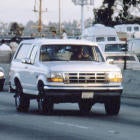
O.J. Simpson timeline: His life on, off field

Prisco Mock 2.0: Chargers trade back

McCarthy worth hype? Case for, against QB

Top defensive FAs remaining by position

Tom Brady 'not opposed' to NFL comeback at age 46

Former Michigan WR expects Harbaugh to draft ex-players

Chiefs' Rice turns himself in to police, out on bond

Report: Chubb reworks contract with Browns

IMAGES
VIDEO
COMMENTS
The average distance travelled in a day by the ships mentioned during light breeze, moderate and strong as well as during storms. Lastly, how does the speed of ships during the age of sail compare to galleons and carracks and similar eastern ships of that time period? Archived post. New comments cannot be posted and votes cannot be cast. Sort by:
The Battle of Scheveningen, 10 August 1653, painted by Jan Abrahamsz Beerstraaten A ship of war, Cyclopaedia 1728, Vol 2. The Age of Sail is a period that lasted at the latest from the mid-16th (or mid-15th) to the mid-19th centuries, in which the dominance of sailing ships in global trade and warfare culminated, particularly marked by the introduction of naval artillery, and ultimately ...
Researchers' first call when tracking down sailing times should be Lloyd's List. A newspaper reporting shipping movements and casualties, maritime news and other commercial information, Lloyd's List may help to figure out sailing times. The earliest surviving issues date from January 1741, and it was published daily from 1837.
Life at sea in the age of sail. Life at sea during the age of sail was filled with hardship. Sailors had to accept cramped conditions, disease, poor food and pay, and bad weather. Over a period of hundreds of years, seafarers from the age of the early explorers to the time of the Battle of Trafalgar in 1805, shared many common experiences.
During the Age of Sail winds and currents determined trade routes and therefore influenced European imperialism and modern political geography. For an outline to the main wind systems see Global wind patterns . Pilotage or cabotage, in one sense, is the art of sailing along the coast using known landmarks. Navigation, in one sense, is the art ...
Clipper route. The clipper route, followed by ships sailing between Europe and Australia or New Zealand. In the Age of Sail, the Brouwer Route reduced the time of a voyage from The Netherlands to the Dutch East Indies from almost 12 months to about six months. The clipper route was derived from the Brouwer Route and was sailed by clipper ships ...
From the mid 16 th century to the mid 19 th century, sailing was at its all-time peak. Its height began at the Battle of Lepanto in 1571 and ended during the Battle of Hampton Roads in 1862 ("Age of Sail"). In this last battle, the use of the steamship the CSS Virginia in the battle destroyed the still sailing ships and proved the power and feasibility of steam-powered sea travel ("Age ...
Ptolemy's bonds were hard to break. European exploration - Age of Discovery, Voyages, Expansion: In the 100 years from the mid-15th to the mid-16th century, a combination of circumstances stimulated men to seek new routes, and it was new routes rather than new lands that filled the minds of kings and commoners, scholars and seamen.
The age of fighting sail. By the middle of the 17th century guns arrayed along the sides of fighting ships were the decisive weapon.Heavy guns required a gun deck and a short, sturdy hull, which were at odds with the galley's requirements of lightness and length. Thus, the shift to sail was a victory of fighting strength over maneuver. Tactically, sailing navies became victims of the wind ...
Philip K. Allan is the author of the award-winning Alexander Clay series of nautical fiction set in the Royal Navy of the late 18th century. He studied the 18th-century navy at the University of London and is a member of the Society for Nautical Research. As the sun rose on 21 October 1805, the most famous naval battle of the Age of Sail was ...
The logistics of feeding the hundreds of sailors and officers who made up the crew of large navy ships in the Age of Sail was challenging to say the least. Records from USS Constitution from the War of 1812 reveal just how much food was required to feed her large crew. The frigate left port on 30 December 1813 with 485 men onboard for a cruise ...
The Age of Sail was a period of maritime exploration and discovery that spanned from the 15th to the 19th century. It was a time when sailors and explorers ventured into uncharted waters, braving treacherous seas and unknown dangers in search of new lands, resources, and trade routes. This era saw the rise of powerful naval empires, such as the ...
If you're short on time, here's a quick answer: In 1600, a typical sailing ship would take 4-8 weeks to cross the Atlantic from Europe to the Americas, depending on weather and currents. Read on below for more details. In this comprehensive guide, we'll cover the typical sailing speeds, popular routes, weather factors, current knowledge ...
Shipboard Life during the Age of Sail. Before the 1930s, commercial air-travel was but the dream of fools. And before the mid 1800s, an ocean-voyage in a ship powered by something other than oars or the wind, was seen as absurd. From the earliest days of the Age of Sail, starting in the 1500s, until sailing ships were finally declared obsolete ...
Each watch was four hours long, divided into 30-minute segments. Let us imagine it is 12:00 (noon or midnight). The bell has struck eight times, telling us that the watch is ended. At 12:30 one bell rings, at 1:00 two bells, at 1:30 three, and so on, until it is once again eight bells (4:00), and the whole cycle repeats.
This rope was offset, so that even on the blackest night a sailor could distinguish front of sail from back by touch alone. The sail then needed to have various cringles (holes), clews (reinforced points for attaching lines at the lower corners), and reefing points (short lengths of rope for reducing sail) added.
Re: Travel times in age of sail It was dependent on the monsoon winds, and a round trip could take as litte as a year; on the 25th April 1789 the Times of London reported that the William Pitt (800 tons) had done the round trip in 11 months 16 days
Modern sailing crossings across the Atlantic Ocean have varying durations based on the type of vessel used. A transatlantic powerboat typically takes 5-7 days, a transatlantic sailing yacht usually takes 10-14 days, a transatlantic cruise ship generally takes 5-7 days, and a crossing on a container ship typically takes 7-10 days.
Looking for average voyage times in the Age of Sail September 22, 2014 11:56 PM Subscribe. Hi, for a project I need a list of average travel times for sailing voyages during the 16th-early 18th centuries. Unfortunately, the web is unusually unhelpful- I can find travel times from Europe to America, but information for my other destinations is ...
1952 - 3.5 days. 1957 - 14 hours by propeller plane. 1958 - 8 hours - average of first trips by jet. 1960s - a few hours. 2015 - 7 hours - plus or minus a few minutes, per search of Travelocity on 11/23/15. Update - 3.5 hours - Concorde SST. Here is a graph of the 500 year history, leaving out the Mayflower and estimate for ...
The early 20th century represented the Golden Age of the liner, where those ships dominated long-distance passenger movements. In 1907, the liner Mauretania with a capacity of 2,300 passengers, was able to cross the Atlantic in 4.5 days, a record held for 30 years until the liner Queen Mary reduced the crossing time by half a day (4 days).
Criminal Case: Travel in Time | Age of SailThere's been a disturbance in time! Are you ready to travel to the past and find the killer?Age of SailCrime Scene...
An Atlantic crossing on a sailboat takes an average of 20 to 25 days. It is important to know the shortcuts, maximize speed, and have experience to cross the Atlantic. The best time to cross the Atlantic is between November and February. The total distance of the trip can be as much as 4,000 nautical miles.
Are you a flexible traveler? Holland America's standby cruises may be for you. The cost: $49 a day, excluding fees, taxes and extras. The catch: It might be a hair-raising, last-minute scramble.
Adventure Trips Offer an Unforgettable Experience "Outdoor adventure trips are an amazing way to spend your time and money in retirement," said Chris Urban, certified financial planner (CFP), retirement income certified professional (RICP) and founder at Discovery Wealth Planning.. "I am a huge fan of spending money on experiences as these often lead to long-lasting memories, sometimes ...
As long as tides and weather cooperate, the Mayflower II will be homeward bound from the Mystic Seaport on April 10, setting off at about 10:30 a.m., according to the Plimoth Patuxet Museums. For ...
NHPR has info on local events, travel updates as well as special coverage with New Hampshire Public Television. Maine The last state in the path of totality in the U.S., much of Northern Maine ...
5. Pack light. Buffalo, New York-based Lisa LaLonde, 74, and her travel companion Antoinette Judelsohn, 70, whom she's been traveling with for over a decade, are pros at packing light.The pals ...
The No. 1 overall selection in the 1969 NFL Draft, Simpson, nicknamed "Juice," ranks just outside the NFL's all-time top 20 in career yards rushing (11,236), famously winning NFL MVP in 1973 while ...